

Essay Mapping Tool
Instructions.
Effective writing at university is a process:
Analyse the task → Gather content → Plan → Draft → Edit
This tool may help you to bridge from planning to drafting by helping you arrange your sentences in a logical order. It also provides tips for each component of an essay – the introduction, body, and conclusion. It can be used to improve your understanding of essay writing in general or as a planning tool for one of your university assignments.
Because this tool is for your personal use only, you may decide to write in bullet points, but we recommend full sentences. Once you have filled in each section, a complete essay overview will be generated which can be printed.
1. Introduction
Three paragraphs planning spaces have been provided for you. You can add or delete as necessary.
The purpose of the body is to logically develop the points made in your thesis and outline statements. There are no rules about the number of paragraphs required in assignment, but in general, you are advised to develop one idea per paragraph. This is done with a clear and coherent structure which introduces the topic in a topic sentence, defines or clarifies which aspect of the topic you are going to discuss, develops and supports your discussion and (optionally) concludes your discussion.
A topic sentence generally has two parts. You may refer to the overall essay topic and also introduce the specific aspect you plan to discuss in this paragraph. This is referred to as topic + controlling idea . You can also use a topic sentence to link to or contrast with the previous paragraph. This is an effective strategy to use with the second body paragraph onwards. You may choose to conclude the paragraph with a summary sentence; however, you are advised not to overuse this type of sentence as it may seem repetitious.
Cohesion and coherence refer to how effectively sentences are connected and how smoothly the writing flows. This is not simply achieved by following a logical paragraph structure, but also by using linking words (e.g. however/furthermore/consequently ) and referring words (e.g. this/that/these/those )
When you develop your argument, remember to use a range of support. You can use examples, logical reasoning, speculation, statistics and citations
Paragraph 1
Write the topic and controlling idea (one sentence).
Support your controlling idea using evidence, examples, elaboration or explanations. Do not go off topic. Do use in-text references.
Sum up the paragraph and link to your thesis OR link to the next paragraph (one sentence).
Paragraph 2
Paragraph 3, 3. conclusion.
The purpose of the conclusion is to summarize the key points you have discussed; however, it often contains a paraphrase of the thesis statement. This helps link the whole essay together. A conclusion may also contain a statement which links the essay to the broader topic or suggests a future action.
You can begin with the phrase ' In conclusion, ' but there are other phrases you could consider: In summary/This assignment has…/In this essay, I have… . Avoid Finally/Briefly/
Remember to reference any sources you have used. Refer to CDU Library for more information on referencing.
Introduction
To save as a PDF, click the Print button and then change your printer destination to "Save As PDF".
Scroll for more content
- Ayoa Mind Map
- Ayoa Ultimate (with AI)
- Neurodiversity
- Press & Articles
- Help Center
- How to Mind Map
Templates Menu
- Templates Home
- Idea Generation
- Mind Mapping
- Problem Solving
- Retrospectives & Feedback
- Business Strategy
- Design Thinking
- Managing Teams
- Remote Working
- Prioritization
- Product Management
- Project Management
- Specific Framework
- Task Management
- To Do Lists
- Design & Creative
- Development
- Human Resources
- Marketing & Sales
- The Creative Thinking Handbook
- Marshall Goldsmith
Essay Planner template
Helpful for Education Idea Generation Mind Mapping Planning .
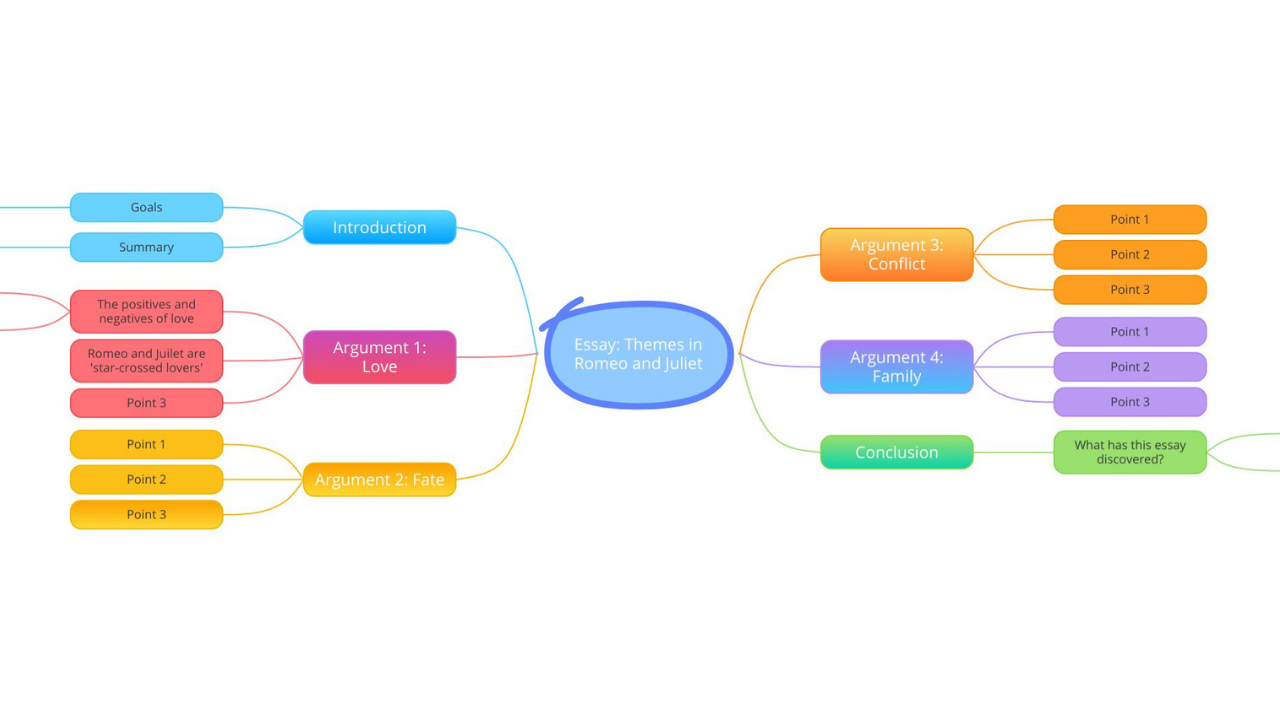
Ayoa’s Essay Planner template simplifies the process of writing an academic essay by allowing you to brainstorm great ideas, then put your arguments into a clear and defined structure ready for you to turn into a cohesive and well-researched paper.
Ready to get started with this template? It’s ready and waiting in Ayoa! Create your account , then simply open the app , select ‘create mind map’ from the homepage and choose this template from the library.
What is included in the Essay Planner template?
Writing an essay can be an overwhelming and time-consuming task for any student, whether you’ve written dozens before, or this is the very first time you’ve put pen to paper for this task. You could have plenty of great points ready and waiting, but no idea how to start your essay and actually begin writing. On the other hand, you could be struggling to generate ideas in the first place! Whatever the issue, Ayoa’s Essay Planner template provides you with the perfect canvas to brainstorm ideas for various types of essays, flesh out your arguments, then put them into a clear and defined structure.
No matter the subject or topic you’re writing about, every essay should follow the same basic structure with an intriguing introduction, a body that contains a number of points or arguments to be explored in detail, and a concise conclusion that sums up the findings of your essay. Our Essay Planner template (which is formatted in the style of a colorful, visual mind map ) provides you with prompts for each of these sections, so you can determine what you’ll be exploring and conduct some helpful research before you begin writing.
The reason you should use a mind map to plan an essay is because they are well-known for their ability to boost idea generation, organization and memory.
Why should you use the Essay Planner template?
Our Essay Planner template provides you with prompts for each of the sections of your essay to help you establish what you want to write before you get started. You can also use our template to make notes of helpful information (such as quotes, excerpts, statistics and links to articles) that you want to include or reference in your essay. By having this information all in one place, and knowing exactly what points you’re going to make, you can make the process of getting your words down both quicker and easier when the time comes. This is because you won’t be interrupted by needing to conduct additional research, and you’ll also be less likely to run out of steam halfway through writing.
The reason that our Essay Writing template is in the style of the mind map is due to the fact that they are proven to boost our ability to think creatively. The interconnecting branches of a mind map mirror our brain’s natural thinking processes, which can help us to generate more creative ideas. Our brains also love visuals, and the different visual cues you can include in a digital mind map (such as shapes, colors and images) can also help our brains to make associations and get out creative juices flowing.
The interconnecting branches of a mind map also perfectly demonstrate the way a process (in this example, writing an essay) should flow and the way various ideas connect to each other, which can make structuring your work incredibly simple. You can also add attachments, notes, comments and checklists to individual branches of your mind map, so everything you need to start writing is in one place!
How to use our Essay Planner template
Unsure of how to write an essay or struggling to find inspiration for your next report? Using our Essay Planner template will get you ready to get started as quickly as possible! Discover how to use our template below.
To access the template, sign up to Ayoa . Once you've signed up, navigate to the homepage to create a new whiteboard , mind map or task board and choose this template from the library .
When you open the template, you will see that we’ve already included examples to help you get started. Beginning with the central idea (the circle in the middle of your mind map), briefly outline what topic you will be exploring in your essay. To do this, double click on the text to bring up a menu of options. From here, you can change the color and size of your text, make it bold, underline it, add emojis, and more.
Tip: You can also click the paintbrush icon to bring up a side panel with options to change how your central idea looks by changing the shape and image.
Now it’s time to start planning your essay. Navigate to the ‘introduction’ section of the mind map and use the attached sub-branches to briefly outline the summary of your essay and what your goals are. Ask yourself: what are you hoping to achieve? What are you expecting the outcome of your essay to be? Use your answers to form the basis of your introduction. To edit an existing branch, double click on the text. To add a new sub-branch, click on the branch you want it to be connected to, then click the green arrow that appears.
Use the next few branches to determine what points you will argue in your essay. In as few words as possible, write what these are in the ‘argument’ branches. You should then use the sub-branches to go into more detail – you may want to include statistics, quotes and excerpts to back up your argument.
Mind maps should contain singular short sentences to avoid it becoming ‘cluttered’ or overwhelming. If you want to go into more detail, you can easily attach files, comments, notes and checklists to individual branches of your mind map. To do this, click on the branch you want to add more detail to, and this will bring up a menu of options. To discover what each one does, simply hover over the icon with your mouse!
Once you’ve outlined what you will cover in the body of your essay, it’s time to plan your conclusion. This will be a concise summary of everything you covered and what you have discovered from your research and analysis. In some cases, you might not know what your conclusion will be until after you’ve covered the main points and arguments of your essay. If this is the case, feel free to fill out this section of the map after you’ve done this.
Now that you have your plan, it’s time to start writing! Use the hierarchical structure of the mind map to structure your essay, developing the branches into sentences and paragraphs. Keep your mind map open so you can keep referring back to it and ensure that you’re staying on track.

The smarter way to work
Ayoa is an all-in-one online whiteboard where you can brainstorm ideas, work together and get things done. View website
Submit your template
Created a template that you think others might find useful?
Created a template that you think others might find useful? Submit your template by following the steps below:
Open the board you would like to submit as a template. Click the settings (cog) icon in the top right hand corner and select ‘Create Template.’ Name the template and click ‘Create Template’ again to confirm.
Once your new template has opened, click the settings icon once again and select ‘Share Template’, ‘Public Share’ and then ‘Yes’. Copy the public sharing URL that is generated.
Please note that by making your template public, anyone with access to this link will be able to view your template.
Email your template URL along with your name, the template name and a short description of your template to [email protected].

About Louise Cunnah
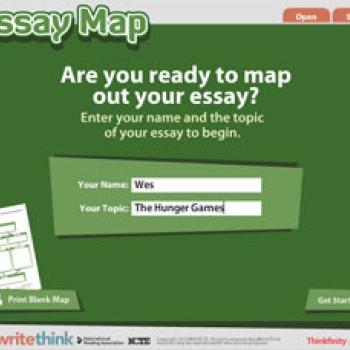
About this Interactive
Related resources.
Expository writing is an increasingly important skill for elementary, middle, and high school students to master. This interactive graphic organizer helps students develop an outline that includes an introductory statement, main ideas they want to discuss or describe, supporting details, and a conclusion that summarizes the main ideas. The tool offers multiple ways to navigate information including a graphic in the upper right-hand corner that allows students to move around the map without having to work in a linear fashion. The finished map can be saved, e-mailed, or printed.
- Student Interactives
- Strategy Guides
- Lesson Plans
- Calendar Activities
The Persuasion Map is an interactive graphic organizer that enables students to map out their arguments for a persuasive essay or debate.
This Strategy Guide describes the processes involved in composing and producing audio files that are published online as podcasts.
This strategy guide explains the writing process and offers practical methods for applying it in your classroom to help students become proficient writers.
This strategy guide clarifies the difference between persuasion and argumentation, stressing the connection between close reading of text to gather evidence and formation of a strong argumentative claim about text.
Students will identify how Martin Luther King Jr.'s dream of nonviolent conflict-resolution is reinterpreted in modern texts. Homework is differentiated to prompt discussion on how nonviolence is portrayed through characterization and conflict. Students will be formally assessed on a thesis essay that addresses the Six Kingian Principles of Nonviolence.
Students develop their reading, writing, research, and technology skills using graphic novels. As a final activity, students create their own graphic novels using comic software.
Students are encouraged to understand a book that the teacher reads aloud to create a new ending for it using the writing process.
While drafting a literary analysis essay (or another type of argument) of their own, students work in pairs to investigate advice for writing conclusions and to analyze conclusions of sample essays. They then draft two conclusions for their essay, select one, and reflect on what they have learned through the process.
Students analyze rhetorical strategies in online editorials, building knowledge of strategies and awareness of local and national issues. This lesson teaches students connections between subject, writer, and audience and how rhetorical strategies are used in everyday writing.
It's not easy surviving fourth grade (or third or fifth)! In this lesson, students brainstorm survival tips for future fourth graders and incorporate those tips into an essay.
Students explore the nature and structure of expository texts that focus on cause and effect and apply what they learned using graphic organizers and writing paragraphs to outline cause-and-effect relationships.
Students prepare an already published scholarly article for presentation, with an emphasis on identification of the author's thesis and argument structure.
- Print this resource
Explore Resources by Grade
- Kindergarten K
- Start diagramming Start diagramming
Figma design
Design and prototype in one place

Collaborate with a digital whiteboard

Translate designs into code

Get the desktop, mobile, and font installer apps
See the latest features and releases
- Prototyping
- Design systems
- Wireframing
- Online whiteboard
- Team meetings
- Strategic planning
- Brainstorming
- Diagramming
- Product development
- Web development
- Design handoff
- Product managers
Organizations
Config 2024
Register to attend in person or online — June 26–27

Creator fund
Build and sell what you love
User groups
Join a local Friends of Figma group
Learn best practices at virtual events
Customer stories
Read about leading product teams
Stories about bringing new ideas to life

Get started
- Developer docs
- Best practices
- Reports & insights
- Resource library
- Help center
FigJam Build a strong foundation with our essay plan template
No shaky arguments here. Whether it’s a class assignment, personal statement, or a missive on the company blog, FigJam’s essay writing plan will help you construct a stronger essay outline from the ground up.
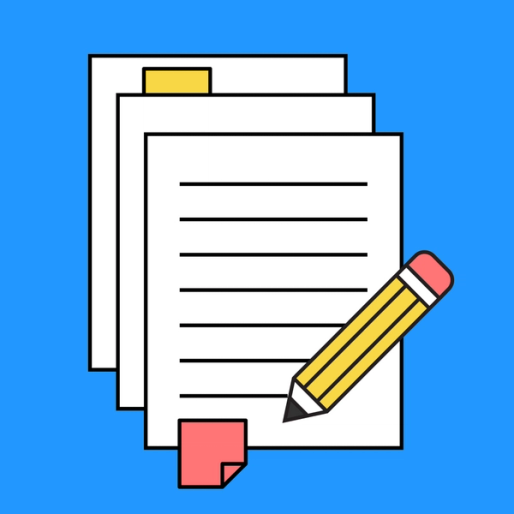
Essay plan template
Share ideas, hone arguments, and refine your writing with our collaborative essay plan template.

Nail down your message
Organize evidence, strengthen supporting arguments, and hammer your main point home with our essay planning sheet.
Create flow: Maintain a cohesive writing process with an essay planning template that clarifies how one section leads to the next.
Evaluate your argument from all sides: Crystallize your claim and test it out from new angles in a visual format.
Do your research: Fact check your work and sources before writing by laying out supporting evidence on an easy-to-read outline.
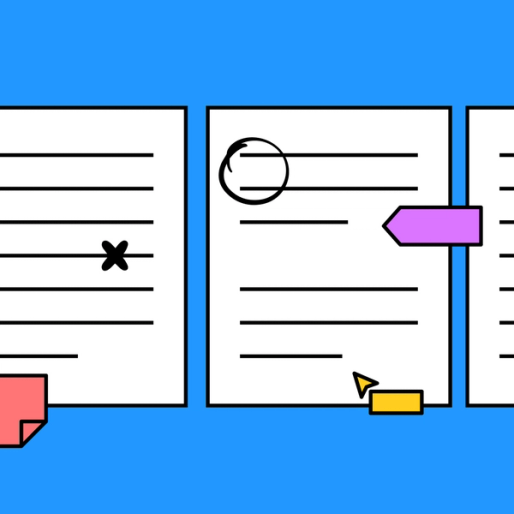
FigJam Make a statement together
Writing doesn’t have to be a solo act. FigJam’s Community-built widgets make it easy to draft with collaborators and source feedback from trusted peers. Fold in new ideas and fine-tune existing arguments with Badge, Storymapper, and Lil notes.
Break it down, then build it up
Perfect the nuts and bolts of your essay with a well-organized essay plan example. Next, find new ways to tell your story with templates from our Community.

Story mapping
Design a compelling narrative step by step.
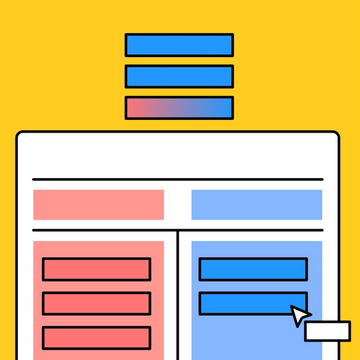
Compare and contrast the main points in your essay.
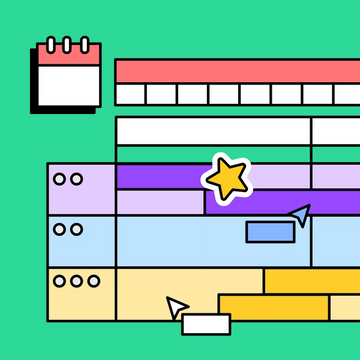
Other templates from the community
Share your message with peers, mentors, and more with interactive templates.
How to write an essay plan?
If you’re wondering how to plan an essay or how to write an effective essay plan with important points and supporting details, just tap into our free essay plan example to get started. From there, you’ll be prompted to break your essay down into the following sections:
- Introduction
- Body paragraph #1
- Body paragraph #2
- Body paragraph #3
Fill in each of these sections with relevant information and credible sources. Then, share it with your trusted collaborators and peers to make sure your argument sings.
What are the 5 aspects of planning an essay?
The 5 aspects of planning an essay correspond to the 5 main sections of your essay: the introduction, the 3 body paragraphs, and the conclusion.
- Introduction – Planning an introduction involves writing a thesis statement and a brief list that outlines the order of your supporting arguments.
- Body paragraphs (3) – As you plan your 3 body paragraphs, you’ll collect evidence—from credible sources—that backs up any supporting detail, arguments, and thesis.
- Conclusion – While you conceptualize this final section, consider how you can open up the floor for further conversation after the essay ends. Are there any related questions you wished you’d asked? What makes this a relevant topic—today? Jot down all of your ideas on a planning sheet for essays.
What is a good structure in an essay?
Many essays follow the classic 5-part structure—the introduction that states your main argument, the 3 points supporting that claim, and the conclusion that wraps everything up.
Keep in mind, however, that you don't have to follow this essay planning example exactly. Some of the best essays break the mold—so don’t be afraid to customize your essay planning sheet or collaborate on a creative structure as you outline.
Other templates you might like

Explore 1,000+ templates on the Figma community
Explore even more templates, widgets, and plugins—all built by the Figma community.

7 Steps for Writing an Essay Plan
Have you ever started writing an essay then realized you have run out of ideas to talk about?
This can make you feel deflated and you start to hate your essay!

The best way to avoid this mid-essay disaster is to plan ahead: you need to write an Essay Plan!
Essay planning is one of the most important skills I teach my students. When I have one-to-one tutorials with my students, I always send them off with an essay plan and clear goals about what to write.
Essay Planning isn’t as dull as you think. In fact, it really does only take a short amount of time and can make you feel oh so relieved that you know what you’re doing!
Here’s my 7-Step method that I encourage you to use for your next essay:
The 7-Step Guide on How to write an Essay Plan
- Figure out your Essay Topic (5 minutes)
- Gather your Sources and take Quick Notes (20 minutes)
- Brainstorm using a Mind-Map (10 minutes)
- Arrange your Topics (2 minutes)
- Write your topic Sentences (5 minutes)
- Write a No-Pressure Draft in 3 Hours (3 hours)
- Edit your Draft Once every Few Days until Submission (30 minutes)
I’ve been using this 7-Step essay planning strategy since I was in my undergraduate degree. Now, I’ve completed a PhD and written over 20 academic journal articles and dozens of blog posts using this method – and it still works!
Let’s go through my 7 steps for how to write an essay plan.
Prefer to Watch than Read? Here’s our video on writing an Essay Plan.
how to write an essay plan
1. figure out your essay topic. here’s how..
Where did your teacher provide you with your assessment details?
Find it. This is where you begin.
Now, far, far, far too many students end up writing essays that aren’t relevant to the essay question given to you by your teacher. So print out your essay question and any other advice or guidelines provided by your teacher.
Here’s some things that your assessment details page might include:
- The essay question;
- The marking criteria;
- Suggested sources to read;
- Some background information on the topic
The essay question is really important. Once you’ve printed it I want you to do one thing:
Highlight the key phrases in the essay question.
Here’s some essay questions and the key phrases you’d want to highlight:
This strategy helps you to hone in on exactly what you want to talk about. These are the key phrases you’re going to use frequently in your writing and use when you look for sources to cite in your essay!
The other top thing to look at is the marking criteria. Some teachers don’t provide this, but if they do then make sure you pay attention to the marking criteria !
Here’s an example of a marking criteria sheet:
Sample Essay Topic: Is Climate Change the Greatest Moral Challenge of our Generation?
Now, if you have a marking criteria you really need to pay attention to this. You have to make sure you’ve ticked off all the key criteria that you will be marked on. For the example above, your essay is going to have to make sure it:
- Takes a position about whether climate change is a serious challenge for human kind;
- Discusses multiple different people’s views on the topic;
- Explores examples and case studies (‘practical situations’);
- Uses referencing to back up your points.
The reason you need to be really careful to pay attention to this marking criteria is because it is your cheat sheet: it tells you what to talk about!
Step 1 only takes you five minutes and helps you to clearly clarify what you’re going to be talking about! Now your mind is tuned in and you can start doing some preliminary research.
2. Gather your Sources and take Quick Notes. Here’s how.
Now that you know what your focus is, you can start finding some information to discuss. You don’t want to just write things from the top of your head. If you want top marks, you want some deep, detailed and specific pieces of information.
Fortunately, your teacher has probably made this easy for you.
The top source for finding information will be the resources your teacher provided. These resources were hand picked by your teacher because they believed these were the best sources available our there on the topic. Here are the most common resources teachers provide:
- Lecture Slides;
- Assigned Readings.
The lecture slides are one of the best resources for you to access. Lecture slides are usually provided online for you. Download them, save them on your computer, and dig them up when it’s time to write the essay plan.
Find the lecture slides most relevant to your topic. To take the example of our climate change essay, maybe climate change is only discussed in three of the weeks in your course. Those are the three weeks’ lecture slides you want to hone-in on.
Flick through those lecture slides and take quick notes on a piece of paper – what are the most important topics and statistics that are relevant to your essay question?
Now, move on to the assigned readings . Your teacher will have selected some readings for you to do for homework through the semester. They may be eBooks, Textbooks or Journal Articles.
These assigned readings were assigned for a reason: because they have very important information to read ! Scan through them and see if there’s any more points you can add to your list of statistics and key ideas to discuss.
Next, try to find a few more sources using Google Scholar. This is a great resource for finding more academic articles that you can read to find even more details and ideas to add to your essay.
Here’s my notes that I researched for the essay question “Is Climate Change the Greatest Moral Challenge of our Generation?” As you can see, it doesn’t have to be beautiful #Studygram notes! It’s just rough notes to get all the important information down:

Once you’ve read the assigned lecture slides and readings, you should have a good preliminary list of ideas, topics, statistics and even quotes that you can use in step 3.
3. Brainstorm using a Mind-Map. Here’s how.
Do your initial notes look a little disorganized?
That’s okay. The point of Step 2 was to gather information. Now it’s time to start sorting these ideas in your mind.
The best way to organize thoughts is to create a Mind-Map. Here’s how Mind-Maps often look:

For your essay plan Mind-Map, write the essay question in the middle of the page and draw a circle around it.

Then, select the biggest and most important key ideas that you think are worth discussing in the essay. To decide on these, you might want to look back at the notes you took in Step 2.
Each key idea will take up around about 200 – 350 words (1 to 2 sentences).
Here’s a rough guide for how many key ideas you’ll want depending on your essay length:
- 1000-word essay: 3 to 4 key ideas
- 1500-word essay: 5 to 7 key ideas
- 2000-word essay: 6 to 8 key ideas
- 3000-word essay: 9 to 12 key ideas
Once you’ve selected your key ideas you can list them in a circle around the essay question, just like this:

Last, we need to add detail and depth to each key idea. So, draw more lines out from each key ideas and list:
- Two sources that you will cite for each key idea;
- A statistic or example that you will provide for each key idea;
- Any additional interesting facts for each key idea
Here’s how it might look once you’re done:

4. Arrange your Topics. Here’s how.
You’re well and truly on your way to getting your essay down on paper now.
There’s one last thing to do before you start getting words down on the manuscript that you will submit. You need to arrange your topics to decide which to write first, second, third, fourth, and last!
Here are some things to keep in mind:
- Start and end with your strongest points;
- Ensure the points logically flow.
To ensure your points logically flow, think about how you’re going to transition from one idea to the next . Does one key point need to be made first so that the other ones make sense?
Do two key points seem to fit next to one another? If so, make sure you list them side-by-side.
Have a play around with the order you want to discuss the ideas until you’re comfortable. Then, list them in order. Here’s my order for my Climate Change essay:
Each of these key ideas is going to turn into a paragraph or two (probably two) in the essay.
5. Write your topic Sentences in just 5 minutes. Here’s how.
All good essays have clear paragraphs that start with a topic sentence . To turn these brainstormed key points into an essay, you need to get that list you wrote in Step 5 and turn each point into a topic sentence for a paragraph.
It’s important that the first sentence of each paragraph clearly states the paragraph’s topic. Your marker is going to want to know exactly what your paragraph is about immediately. You don’t want your marker to wait until the 3 rd , 4 th or 5 th line of a paragraph before they figure out what you’re talking about in the paragraph.
So, you need to state what your key idea is in the first sentence of the paragraph.
Let’s have a go at turning each of our key ideas into a topic sentence:
6. Write a No-Pressure Essay Draft in just 3 Hours. Here’s how.
Okay, now the rubber hits the road. Let’s get writing!
When you write your first draft, don’t put pressure on yourself. Remind yourself that this is the first of several attempts at creating a great essay, so it doesn’t need to be perfect right away. The important thing is that you get words down on paper.
To write the draft, have a go at adding to each of your topic sentences to turn them into full paragraphs. Follow the information you wrote down in your notes and Mind-Map to get some great details down on paper.
Forget about the introduction and conclusion for now. You can write them last.
Let’s have a go at one together. I’m going to choose the paragraph on my key idea “Is climate change caused by humans?”
I’ve already got my first sentence and my brainstormed ideas. Let’s build on them to write a draft paragraph:

- “Most scientists believe climate change is caused by humans. In fact, according to the IPCC, over 98% of climate change scientists accept the scientific data that climate change is caused by humans (IPCC, 2018). This figure is very high, signalling overwhelming expert consensus. This consensus holds that the emission of carbon from burning of fossil fuels in the 20 th Century is trapping heat into the atmosphere. However, a minority of dissenting scientists continue to claim that this carbon build-up is mostly the fault of natural forces such as volcanoes which emit enormous amounts of carbon into the atmosphere (Bier, 2013).”
Your turn – have a go at your own draft paragraphs based on your Mind-Map for your essay topic! If you hit a rut or have some trouble, don’t forget to check out our article on how to write perfect paragraphs .
Once you’ve written all your paragraphs, make sure you write an introduction and conclusion .
Gone over the word count? Check out our article on how to reduce your word count.
7. Edit your Draft Once every Few Days until Submission. Check out this simple approach:
Okay, hopefully after your three hour essay drafting session you’ve got all your words down on paper. Congratulations!
However, we’re not done yet.
The best students finish their drafts early on so they have a good three or four weeks to come back and re-read their draft and edit it every few days.
When coming back to edit your draft , here’s a few things to look out for:
- Make sure all the paragraph and sentence structure makes sense. Feel free to change words around until things sound right. You might find that the first time you edit something it sounds great, but next time you realize it’s not as good as you thought. That’s why we do multiple rounds of edits over the course of a few weeks;
- Check for spelling, grammar and punctuation errors;
- Print out your draft and read it on paper. You notice more mistakes when you read a printed-out version;
- Work on adding any more details and academic sources from online sources like Google Scholar to increase your chance of getting a top grade. Here’s our ultimate guide on finding scholarly sources online – it might be helpful for this step!
Before you go – Here’s the Actionable Essay Plan Tips Summed up for you
Phew! That essay was tough. But with this essay plan, you can get through any essay and do a stellar job! Essay planning is a great way to ensure your essays make sense, have a clear and compelling argument, and don’t go off-topic.
I never write an essay without one.
To sum up, here are the 7 steps to essay planning one more time:
The 7-Step Guide for How to Write an Essay Plan

Chris Drew (PhD)
Dr. Chris Drew is the founder of the Helpful Professor. He holds a PhD in education and has published over 20 articles in scholarly journals. He is the former editor of the Journal of Learning Development in Higher Education. [Image Descriptor: Photo of Chris]
- Chris Drew (PhD) https://helpfulprofessor.com/author/chris-drew-phd/ 5 Top Tips for Succeeding at University
- Chris Drew (PhD) https://helpfulprofessor.com/author/chris-drew-phd/ 50 Durable Goods Examples
- Chris Drew (PhD) https://helpfulprofessor.com/author/chris-drew-phd/ 100 Consumer Goods Examples
- Chris Drew (PhD) https://helpfulprofessor.com/author/chris-drew-phd/ 30 Globalization Pros and Cons
1 thought on “7 Steps for Writing an Essay Plan”
Nice fun and concise approach to essays, thank you
Leave a Comment Cancel Reply
Your email address will not be published. Required fields are marked *
Free Essay Outline Generator
Need to quickly outline an argumentative essay or a research paper? Try out this free essay outline generator!
Are you a college student struggling to compose a well-organized essay, yet your deadline is approaching fast?
Our essay outline generator is here to help you save time and avoid stress by creating a structure for whatever kind of essay you’re writing. This AI-powered essay outline-making tool employs cutting-edge Natural Language Processing (NLP) technologies to swiftly and accurately comprehend complicated themes. So, you don’t need to worry about grammatical or spelling issues when preparing outlines for papers or articles.
- 🔢 How to Use It?
- 🤩 The Tool’s 5 Benefits
- 📝 What Is an Essay Outline?
- ✍️ How to Write an Outline
🔎 References
🔢 essay outline generator: how to use it.
To generate an essay outline, you’ll need to take the following steps:
- Choose the genre of your assignment . Is it an essay, research paper, literature review, or proposal?
- Choose the type of the text . Do you need an informative, analytical, persuasive, or argumentative paper?
- Indicate the number of paragraphs . That’s an optional step.
- Add the topic . Please note that it should not be too long or too short.
🤩 Essay Outline Generator: the 5 Benefits
Using our outline generator is easy and beneficial for students.
Here are the parameters you’re sure to like:
📝 What Is an Essay Outline & Why Is It Important?
An essay outline is a technique of organizing the structure and flow of your essay before you begin writing the text itself. You should outline any essay, no matter which type you need: argumentative , comparative , narrative , or other.

Outlining highlights each section’s content, the paragraphs’ sequence , and the relationship between various arguments. Though you may only sometimes be required to make an outline before drafting the essay, doing so can help you plan your thoughts and ensure that you cover all the basics.
Let’s review 5 advantages of an essay outline.
Enhanced Focus
An outline gathers and emphasizes all of your ideas to determine if you’ve adhered to your main point or veered off course. In essence, it helps you maintain concentration and prevents you from wandering off into unrelated topics’ discussion.
Seamless Transitions
If you organize your thoughts logically, your writing will flow more smoothly , and the topic sentences in the body paragraphs of your essay will have more impact. You may check your transitions and the logic of your material with a well-planned outline.
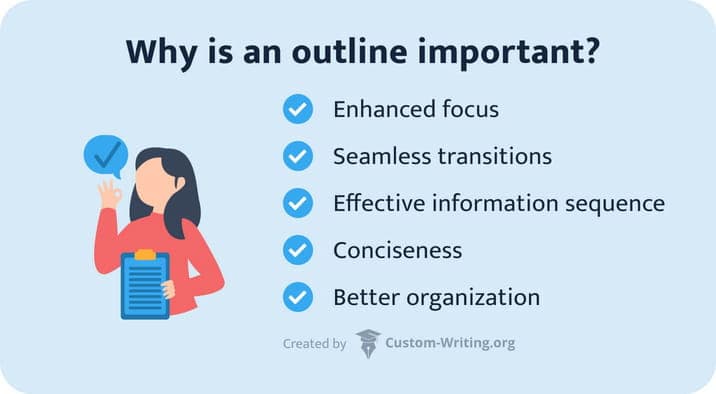
Effective Information Sequence
Presenting your strongest point first is better. Your outline will help you determine whether you have presented your information in the most effective sequence .
Conciseness
An essay outline allows for achieving one of the most important writing goals: conciseness . Maintaining simplicity and brevity will help the reader understand your message rather than burying it beneath a sea of superfluous words and off-topic discussion points.
Better Organization
An outline is fundamentally a tool of organization . Have you said everything you intended to? Did you use a logical approach to your argument? Is your argument convincing? It’s still crucial to plan your strategy for the essay, even if you’re not writing to prove or debate a specific point.
✍️ How to Write an Essay Outline
Here are a few pointers on developing an outline for your essay.
Step #1 Understand the Requirements
Before beginning to write the outline, please read the assignment instructions thoroughly .
Ensure you understand:
- The style of the essay you should write
- The number of citations required
- The required length
Ask yourself:
What’s the goal of my essay?
Do I intend to inform, convince, or merely entertain the readers? Depending on the objective, you will know which thesis to consider, which writing techniques to employ, and how to conceptualize research in the article.
Step #2: Formulate Your Thesis Statement
Establish your thesis statement to determine which topic sentences to outline in your essay .
The thesis statements must:
- Be debatable
- Contain sufficient details to captivate readers
Once you have a thesis prepared , you may begin organizing your essay. Please note that the outline is not an initial stage of work. You should already have a clear idea of your essay by the time you are creating an outline.
Step #3: Brainstorm
Brainstorming involves writing down as many concepts as possible without limiting yourself or critiquing any of them. You can generate ideas and arguments confirming your thesis during brainstorming or, vice versa, choose opposing points.
Step #4: Select the Best Points
Now that you came up with ideas for the essay, it’s time to review your planning notes and choose the ideas that will help you reach your essay’s purpose.
How does this prove my point?
Do that for each piece of information you have written down. If you have a concise, well-thought-out response to that query, consider including it on your list of essay topics.
Step #5: Structure the Body
Using the compiled perspectives you created, determine the most significant points you will present in your essay. These will be the parts of your essay’s body. List the facts, anecdotes, and statistics that corroborate these claims.
There should be only one idea per paragraph, and each of them should be connected with your thesis statement.
Step #6: Write Your Outline
Now that you fully understand your main claims and supporting evidence, it’s time to compose your outline.
Format your essential points into a concise, well-organized framework using a template for the style of essay you’re writing. You’ll fill in the blanks with information when you write your first draft.
👀 Essay Outline Examples
In this section, you’ll find outline examples for various essay types. Note that these are 5-paragraph essay outlines.
Argumentative Essay Outline
Here is an illustration of an argumentative essay outline that a college student can use:
- Title : Almond Milk Is Better Than Soy Milk
- Introduction : Discuss the distinctions between soy and almond milk and their respective levels of popularity.
- Thesis : Almond milk is a more nutritious, flavorful, and sweeter alternative to soy milk.
- Compare the typical calories in a serving of soy milk with almond milk.
- Cite how almond milk is more easily included in consumers’ daily calorie allowances.
- Compare the advantages of consuming vegan versus items made from animals.
- Describe how almond and soy milk’s vegan status makes them available to vegans and non-vegans and a better, more environmentally friendly option for everyone.
- The product is easier to find than soy milk due to the availability of almonds and how much milk they produce with every squeeze.
- Tell stories of people who have dairy allergies and the health issues they cause.
- Conclusion : Explain why almond milk is preferable to soy milk again, and include any supporting arguments.
Expository Essay Outline
Here is an illustration of an expository essay for a middle school student.
- Title : My Favorite Pet
- Introduction : Describe your favorite animal and your feelings towards the pet. Provide background on the pet and some interesting features about it.
- Thesis : My dog, Coco, is my best friend.
- Compare the dog to other pets you have encountered.
- Describe how the dog’s breed, color, favorite snack, and why you chose the name for the dog.
- Tell stories about your dog’s hobbies and your best memories together.
- Conclusion : Explain why you love your dog and how you plan to care for your furry best friend.
Personal Essay Outline
Here is a sample of an essay outline for a personal essay suitable for high school students:
- Title : The Two Best Birthdays in My Life
- Introduction : Describe your feelings around birthdays and how you prefer commemorating yours.
- Thesis : My 16 th and 17 th birthdays were the two happiest days of my life.
- I obtained a driver’s permit on my sixteenth birthday, and my closest pals and I went to our first live music concert.
- I still have my armband and ticket voucher from the event.
- I initially believed that everyone didn’t remember my birthday. I was inconsolable.
- Then, as a pleasant surprise, my family drove six hours to pick me up and take me to the art exhibition I had been dying to see.
- Conclusion : The reasons mentioned above made my 16 th and 17 th birthdays very special.
Thank you for reading this article! If you wish to continue working on the sample, check out our essay generator to get a full-scale paper example.
❓ Essay Outline Generator FAQ
❓ what is an essay outline.
An essay’s outline is used as the paper’s basic framework. It’s a written version of an essay’s main idea and most important supporting points. Whenever you are working on an essay, creating one is a good idea to help you build a supporting structure for further writing stages.
❓ How to make an essay outline?
You should formulate the essay’s main point that will lay the basis for your essay’s thesis statement. Then apply brainstorming to generate supporting arguments and find academic sources that expand those points and help you build solid, coherent content.
❓ What elements are required in an outline for an argumentative essay?
The standard format for an argumentative essay consists of an introduction, a thesis statement, supporting evidence, counterarguments, and a conclusion. You should insert that data in the argumentative essay outline generator to get high-quality results.
❓ How does an essay outline generator work?
An outline generator for essays is an online, AI-powered tool that helps students organize their essay ideas orderly. The essay outline builder uses complex AI models to research, paraphrase information, create relevant outlines, and guarantee that its content is authentic, interesting, and related to the topic.
- How to Write an Outline in 5 Steps, with Examples
- Types of Outlines and Samples - Purdue OWL
- Why and How to Create a Useful Outline - Purdue OWL
- Creating an Outline
- Outlining | - Harvard College Writing Center

- LEARNING SKILLS
- Study Skills
- Essay Planning
Search SkillsYouNeed:
Learning Skills:
- A - Z List of Learning Skills
- What is Learning?
- Learning Approaches
- Learning Styles
- 8 Types of Learning Styles
- Understanding Your Preferences to Aid Learning
- Lifelong Learning
- Decisions to Make Before Applying to University
- Top Tips for Surviving Student Life
- Living Online: Education and Learning
- 8 Ways to Embrace Technology-Based Learning Approaches
- Critical Thinking Skills
- Critical Thinking and Fake News
- Understanding and Addressing Conspiracy Theories
- Critical Analysis
- Top Tips for Study
- Staying Motivated When Studying
- Student Budgeting and Economic Skills
- Getting Organised for Study
- Finding Time to Study
- Sources of Information
- Assessing Internet Information
- Using Apps to Support Study
- What is Theory?
- Styles of Writing
- Effective Reading
- Critical Reading
- Note-Taking from Reading
- Note-Taking for Verbal Exchanges
Planning an Essay
- How to Write an Essay
- The Do’s and Don’ts of Essay Writing
- How to Write a Report
- Academic Referencing
- Assignment Finishing Touches
- Reflecting on Marked Work
- 6 Skills You Learn in School That You Use in Real Life
- Top 10 Tips on How to Study While Working
- Exam Skills
Get the SkillsYouNeed Study Skills eBook

Part of the Skills You Need Guide for Students .
- Writing a Dissertation or Thesis
- Research Methods
- Teaching, Coaching, Mentoring and Counselling
- Employability Skills for Graduates
Subscribe to our FREE newsletter and start improving your life in just 5 minutes a day.
You'll get our 5 free 'One Minute Life Skills' and our weekly newsletter.
We'll never share your email address and you can unsubscribe at any time.
This page is the first of two that describe the processes involved in producing an essay for academic purposes, for school, college or university and covers the planning stages of essay writing, which are important to the overall process.
The second page, Writing an Essay , provides more information on the steps involved in actually writing an essay. We recommend you read both pages to gain a full understanding.
Developing the skill of essay writing takes practice, time and patience , your essay writing skills will improve and develop the more you write.
With the help of your course tutor (teacher or lecturer) and peers (other students) and from constructive feedback from the marker of your work, writing an essay will become easier as you progress through your studies and your confidence increases.
This page details general good practice in essay planning, including what you should do and what you should try to avoid. It is important however, that you understand the specific requirements of your school, college or university.
Writing an essay helps you to consider the issues raised in your course and to relate them to your own experience, way of thinking, and also any wider additional reading and research you may have undertaken in order to tackle the essay topic.
Writing an essay (or other assignment) is an important part of the learning process. In the writing of an assignment, learning occurs as you think through and interpret the points raised (together with those of other writers on the subject).
Presenting your experience and showing understanding within your assignment will, from the marker's point of view, demonstrate your knowledge of the subject area.
The Purpose of an Essay
The original meaning of an essay is ' an attempt ', or a try, at something. It is therefore appropriate to consider writing an essay as a learning exercise.
Essays, and other academic writing, focus the mind and encourage you to come to conclusions about what you are studying.
Writing is often the best possible way to assimilate and organise information. Writing helps to highlight any areas that you have not fully understood and enables you to make further clarifications. It develops your powers of criticism, analysis and expression, and gives you a chance to try out your and other writers' ideas on the subject.
The feedback you receive from the marker of your essay should help to advance your study skills, writing, research and critical thinking skills .
What is the Marker Looking For?
As an essay - in the context of this page - is an assessed piece of work, it can be very useful to consider what the person who will be assessing the work, the marker, will be looking for.
Although different types of essays in different subject areas may vary considerably in their style and content there are some key concepts that will help you understand what is required of you and your essay.
When marking an assignment, a marker will look for some of the following elements, which will demonstrate you are able to:
Find relevant information and use the knowledge to focus on the essay question or subject.
Structure knowledge and information logically, clearly and concisely.
Read purposefully and critically. (See our page: Critical Reading for more)
Relate theory to practical examples.
Analyse processes and problems.
Be persuasive and argue a case.
Find links and combine information from a number of different sources.
Answer the Question
One main factor, always worth bearing in mind, is that a marker will usually only award marks for how well you have answered the essay question.
It is likely that the marker will have a set of criteria or marking guidelines that will dictate how many marks can be awarded for each element of your essay.
Remember it is perfectly possible to write an outstanding essay, but not to have answered the original question. This will, in all likelihood, mean a low mark.
Planning Your Essay
Planning is the process of sorting out what you want to include in your essay.
A well-planned and organised essay indicates that you have your ideas in order; it makes points clearly and logically. In this way, a well-planned and structured essay enables the reader, or marker, to follow the points being made easily.
Essay assignments are usually formulated in one of the following ways:
As a question
A statement is given and you are asked to comment on it
An invitation to ‘ outline’ , ‘ discuss’ or ‘ critically assess’ a particular argument or point of view
Remember always write your essay based on the question that is set and not on another aspect of the subject. Although this may sound obvious, many students do not fully answer the essay question and include irrelevant information. The primary aim of an academic essay is to answer the task set, in some detail.
To help you do this, you might find the following list of stages helpful.
Producing an Essay Plan
The essay plan below contains ten steps.
It is often useful to complete the first six steps soon after receiving your essay question. That way information will be fresh and you are more likely to be thinking about your essay plan as you do other things.
Study the essay question intently.
Write the essay question out in full.
Spend some time, at least half an hour, brainstorming the subject area.
Write down your thoughts on the question subject, its scope and various aspects.
List words or phrases that you think need to be included.
Note the main points you should include to answer the question.
If, at this point, you feel unsure of what to include, talk to your tutor or a peer to clarify that you are on the right track.
Once you have finished the first six steps and you feel sure you know how to proceed, continue to expand on your initial thoughts and build a more in-depth essay outline.
Skim through any course material or lecture handouts and start to build up a more detailed outline. Scan through your own lecture notes, and if anything strikes you as relevant to the assignment task, write where to find it on your detailed outline
Write down where you will find the necessary information on each of the points in your detailed outline (lecture notes, course handouts etc.). Indicate on the outline where you feel that some further research is necessary.
Be careful not to allow your outline to become too complicated; stick to main points and keep it relevant to the question.
If you have been given a reading list or a core text book then check the relevant sections of that.
See our page: Sources of Information for more ideas of where you can find relevant information for your essay.
Academic essays usually have a word limit and writing within the word limit is an important consideration. Many institutions will penalise students for not writing the correct amount of words – for example, the essay question may call for a 2,000 word essay, there may be a 10% grace, so anything between 1,800 and 2,200 is acceptable.
Think about the main elements that need to be covered in the essay. Make sure you allocate the greatest number of words to the 'main body of the essay' and not to a subsidiary point.
Decide how much space you can devote to each section of your outline. For example, a third of a page for the introduction, half a page for point 1 which has two sub-points, one and a half pages for point 2 which has five sub-points etc. Although you will not follow such a space scheme rigidly, it does enable you to keep things under control and to know how much detail to put in, keeping the balance of the essay as you originally planned.
Of course, you will make minor adjustments to your essay plan as you actually write. However, do not make major adjustments unless you are absolutely certain about the alternative and how it fits into your original scheme.
Having a strong essay plan makes the actual task of writing an essay much more efficient.
Continue to: Writing an Essay Sources of Information
See also: Essay Writing Tips Note-Taking for Reading Finding Time To Study

How to plan an essay: Essay Planning
- What's in this guide
- Essay Planning
- Additional resources
How to plan an essay
Essay planning is an important step in academic essay writing.
Proper planning helps you write your essay faster, and focus more on the exact question. As you draft and write your essay, record any changes on the plan as well as in the essay itself, so they develop side by side.
One way to start planning an essay is with a ‘box plan’.
First, decide how many stages you want in your argument – how many important points do you want to make? Then, divide a box into an introduction + one paragraph for each stage + a conclusion.
Next, figure out how many words per paragraph you'll need.
Usually, the introduction and conclusion are each about 10% of the word count. This leaves about 80% of the word count for the body - for your real argument. Find how many words that is, and divide it by the number of body paragraphs you want. That tells you about how many words each paragraph can have.
Remember, each body paragraph discusses one main point, so make sure each paragraph's long enough to discuss the point properly (flexible, but usually at least 150 words).
For example, say the assignment is
Fill in the table as follows:
Next, record each paragraph's main argument, as either a heading or topic sentence (a sentence to start that paragraph, to immediately make its point clear).
Finally, use dot points to list useful information or ideas from your research notes for each paragraph. Remember to include references so you can connect each point to your reading.
The other useful document for essay planning is the marking rubric .
This indicates what the lecturer is looking for, and helps you make sure all the necessary elements are there.
Pathways and Academic Learning Support

- << Previous: What's in this guide
- Next: Additional resources >>
- Last Updated: Feb 15, 2024 1:23 PM
- URL: https://libguides.newcastle.edu.au/essay_planning
Essay Question Analyzer
Comprehensive essay question analysis in seconds. access ai-generated essay question insights to inform your research process..
Free Forever Plan
Get up and running in less than 2 minutes., frequently asked questions.

Essay Outline Generator
Structure your essay with ai.
- Academic essays: Create a clear structure for your research papers, argumentative essays, or literature reviews.
- Blog posts: Organize your blog content into a coherent and logical flow.
- Business reports: Structure your reports to ensure a clear presentation of your findings and recommendations.
- Personal essays: Create a compelling narrative structure for your personal stories or experiences.
- Opinion pieces: Clearly outline your arguments and supporting evidence to persuade your readers.

New & Trending Tools
Nonprofit grant proposal writer, undetectable ai humanizer and paraphraser, ai journalist.
Essay Planner Template

More PESTLE Analysis Template
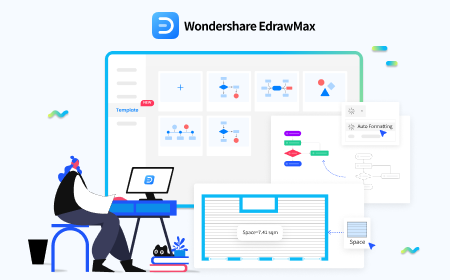
About the Essay Planner Template
- Prompts of introduction
- Prompts of the main body
- Conclusion prompts
- Visual assistance tools
Why should you use the essay planner template?
How to use our essay planner template.
- First of all, you need to choose whatever template you like. So first, go to the homepage and choose the create a new option. There you find the dashboard and the library to choose the templates present there.
- Secondly, start to open the template. Most of the sample examples will already be there to help you to write. Start writing the main idea and brief the subject of the essay by clicking on the menu of the dashboard. Now you will be presented with multiple options to change the sizing and outlook of your writing. You can change the colors, add emojis, and format as well.
- Now start with the introduction segment and use the mind map option on the dashboard. There you would find branches that can help you map the essay and specify the vision of the essay's introduction section. This is where you want to ask the following questions: What is the main goal of this segment of the essay? Or what is the desired outcome? Use the other branches to specify the goal of the essay. Make sure that it is brief. This would be the main argument of the essay. If you want to get into more detail, you can choose the subbranches as well. With those, you can add up various quotes and other data to back up your argument.
- When it comes to mind maps, make sure that the sentences are not long and stuffy because stuffy sentences can overwhelm the readers. At this point, you can add up various other things such As pictures, comments, sidenotes, points, etc. If you want to add up things to your mind map, you can go towards the menu of options and choose whatever you desire to add. Choose the file and add it.
- Now that the body line of your essay is ready, can you have filled up all their content within the essay? You need to write the conclusion now. While working on the conclusion, make sure to make it as short as it can while making sure all the important points are added into it according to the research in data. In few cases, conclusions are not that visible and hard to write; however, you can just summarize what you have written in the essay and come up with the best conclusion. You can edit the conclusion with the additional options in the dashboard to make it seem more professional.
- Now it is time to write the final draft of the essay since you have come up with all the technical structure of the essay. Now gather all the branches you have come up with and change them into essay content and paragraphs. Finally, open your mind maps on the side so you can be on track.
Essay Planning & Writing Tips
- The thesis statement should be captivating and comprehensive: it is important to create a captivating PC statement as it provides the purpose and need of the topic of your essay. It is the core of the essay that holds all the scopes and limitations of your writing skills. You need to make sure it is short and up to that topic's need.
- Every paragraph must have a topic sentence: a topic sentence is important to guide the scheme of sentences. A topic sentence can also be an argument or just an idea statement. Once you state the topic sentence, all you need to do is provide evidence in that paragraph to support it.
- Create a brief and effective conclusion: the conclusion should be well structured and planned because it is important, as it encompasses all the data within the context. There should be the addition of important points with brief closing lines. This way, your piece would be professional-looking and strategically right.
Related Templates
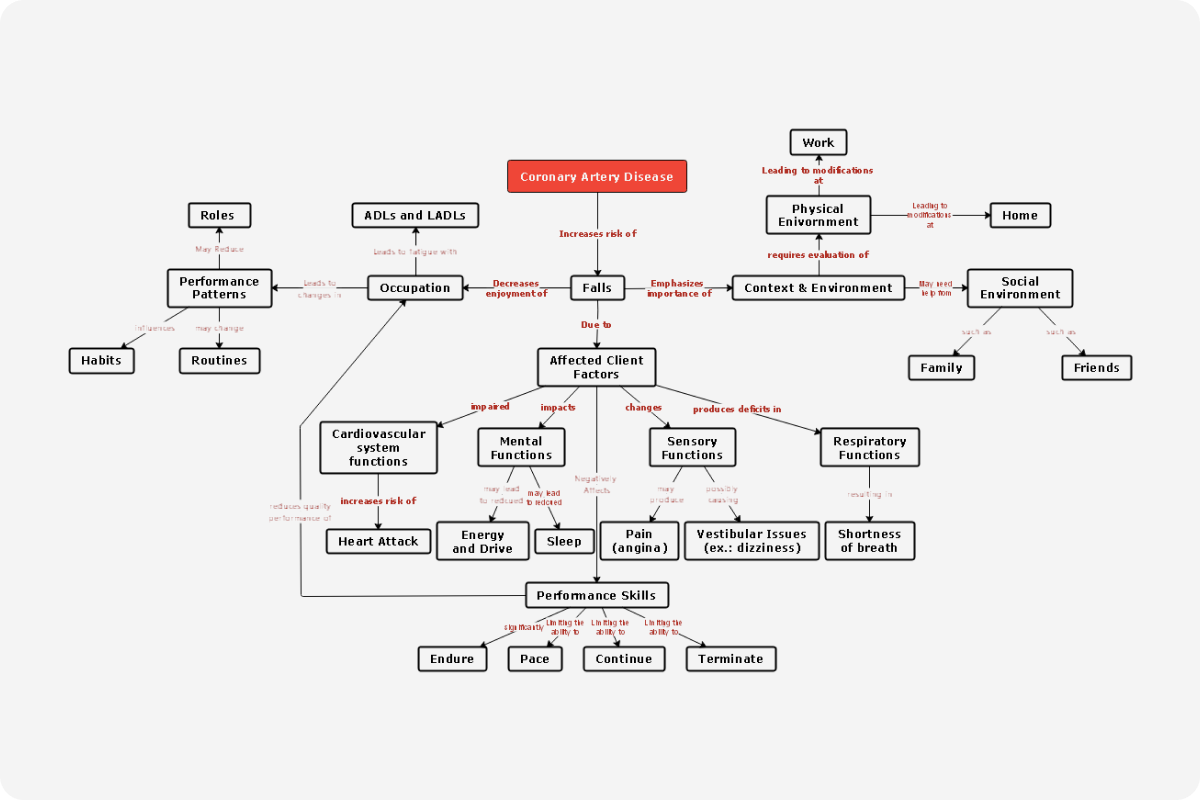
Ultimate Guide to Writing Your College Essay
Tips for writing an effective college essay.
College admissions essays are an important part of your college application and gives you the chance to show colleges and universities your character and experiences. This guide will give you tips to write an effective college essay.
Want free help with your college essay?
UPchieve connects you with knowledgeable and friendly college advisors—online, 24/7, and completely free. Get 1:1 help brainstorming topics, outlining your essay, revising a draft, or editing grammar.
Writing a strong college admissions essay
Learn about the elements of a solid admissions essay.
Avoiding common admissions essay mistakes
Learn some of the most common mistakes made on college essays
Brainstorming tips for your college essay
Stuck on what to write your college essay about? Here are some exercises to help you get started.
How formal should the tone of your college essay be?
Learn how formal your college essay should be and get tips on how to bring out your natural voice.
Taking your college essay to the next level
Hear an admissions expert discuss the appropriate level of depth necessary in your college essay.
Student Stories
Student Story: Admissions essay about a formative experience
Get the perspective of a current college student on how he approached the admissions essay.
Student Story: Admissions essay about personal identity
Get the perspective of a current college student on how she approached the admissions essay.
Student Story: Admissions essay about community impact
Student story: admissions essay about a past mistake, how to write a college application essay, tips for writing an effective application essay, sample college essay 1 with feedback, sample college essay 2 with feedback.
This content is licensed by Khan Academy and is available for free at www.khanacademy.org.

- Teacher Planner Templates
Essay Planner Template
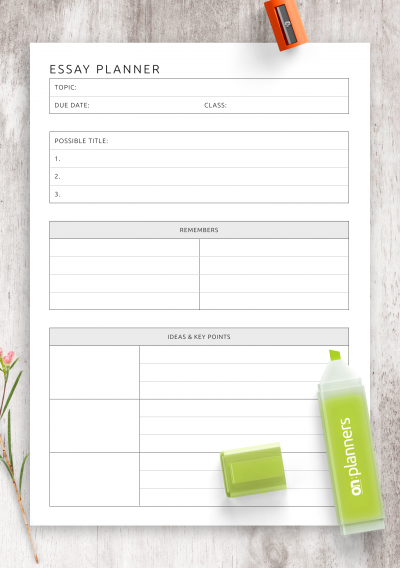
Description:
This great planner will help you make an argumentative, persuasive, and informative essay from introduction to expository moments. Pick a paper size that suits you, download the PDF template, and print it as you start writing your story with pre-prepared materials and creative ideas for your essay.
Sections available in this template:
- Possible Title (1, 2, 3);
- Ideas & Key Points.
Select theme
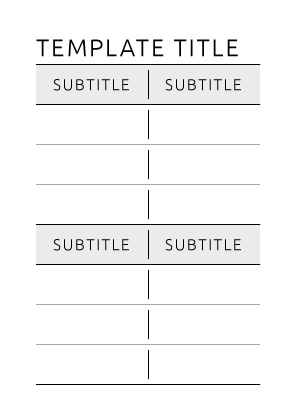
Printing layout and cutting marks preview
Almost there!
It may take some time to generate your template… Shall we send it via email?
Enter your email address and click the button below to get instant access to the template you chose.

Shall we send it via email?
Customer reviews
Great product. Exactly as described.
Purchased item:
So many wonderful designs to choose from and easy to alter would highly recommend this.
Works great with my kindle scribe.
nice product. very detailed and tidy
easy to install and use.
Write a Review
Recommended for you, other templates:.
- In Bibliography
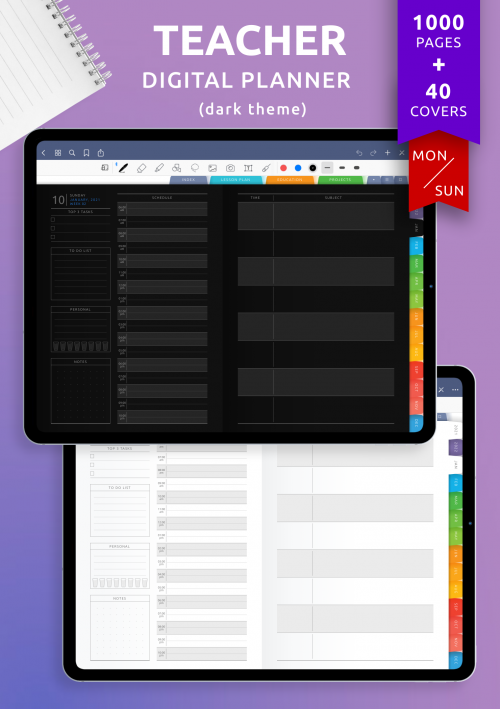
- Days of the Week
- All-in-One Access
- 2024 Calendars
- Kindle Scribe
- Christmas Planning
- For Teachers
- For Students
- Happy Planner
- Traveler's Notebook
- Print-ready planners
- About People
- Motivational
- Lined Paper
- Graph Paper
- Dot Grid Paper
- Cornell Notes
- Daily Calendars
- Weekly Calendar
- Monthly Undated
- Calendar Schedule
- Blank Calendars
- Photo Calendars
- Daily Schedule
- Daily Task List Templates
- Daily Timetable Templates
- Daily with To Do List
- Dated daily planner templates
- Daily hourly planner templates
- Daily Undated
- Weekly Horizontal
- Week at a Glance
- Weekly Hourly Planners
- Weekly with To Do List
- Single page per week
- Weekly Goals Templates
- Two pages per week
- Weekly Schedule
- Weekly Undated
- Weekly Meal
- Monthly Budget
- Monthly Goals Templates
- Monthly Meal Planners
- Bill tracker
- Expenses Tracker
- Finance Templates
- Household budget
- Weekly budget
- Personal budget
- Attendance Sheet
- Business Planning
- Client Management
- Contact Trackers
- Order Tracking
- Product & Supply
- Social Media
- Work Schedule
- Meeting Agenda
- Mileage Tracker
- SMART Goal Templates
- Goal Tracker Templates
- Life Goals Templates
- Goal Setting Templates
- Goal Setting Worksheets
- Checklist Templates
- Weight Loss Planners
- Fitness & Workout templates
- Wellness & Self-Care
- Food calendar templates
- Grocery & Shopping Lists
- Food Diary Templates
- Recipe Books
- Food Inventory
- Reading Log
- Chore Chart Templates
- Lesson Plan Templates
- Weekly Lesson Plan Templates
- Gradebook Templates
- Class Attendance Sheets
- Student Information Sheets
- Habit Tracker
- Mood Trackers
- Password Log
- Homeschooling
- Travel itinerary
- Packing list
- Wedding guest list
- Wedding plan checklists
- Wedding budget
- Digital Planners
- Invitations
Recently added:
- Digital Bullet Journal (Light Theme)
- Digital Goal Planner (Dark Theme)
- Digital Recipe Book PDF for iPad (Dark Theme)
- Digital Meal Planner for iPad (Light Theme)
- Monthly Digital Planner PDF for iPad (Dark Theme)
What are you writing about today?
Write better essays, in less time, with your ai writing assistant.
- Skip to Content
- Skip to Main Navigation
- Skip to Search

Indiana University Bloomington Indiana University Bloomington IU Bloomington

- Our Approach
2024 Solar Eclipse
- Creative Arts for Vets
- Community Arts and Culture Guide
- Rural Placemaking Studio
- Indiana Uplands Food Network
- Community Health Planning
- Project UNITE
- Trauma-Informed Care Certificate
- Housing Ready Toolkit
- Leadership and Innovation
- Discovery Café
- Daviess County
- Dubois County
- Greene County
- Lawrence County
- Orange County
- Washington County
- Resource Directory
- People Directory
- Media Resources
Center for Rural Engagement
Need help planning for the 2024 solar eclipse in your community?
The 2024 Total Solar Eclipse Planning Toolkit can help you prepare yourself and your community for the anticipated excitement surrounding this event, both logistically and creatively.
- Focus Areas
- Arts and Culture
Share the magic of your community during the 2024 solar eclipse
Communities across southern Indiana will align directly with the path of totality during the 2024 solar eclipse. This provides a unique opportunity for Hoosiers and tourists alike to explore the cultural dimensions and creative inspiration of a solar event that will remain in our memories for a lifetime.
With funding support from the Simons Foundation as part of its In the Path of Totality initiative , the Indiana University Center for Rural Engagement is leading IU’s rural solar eclipse initiative, providing staff support, resources and outreach for community activities that unite residents around the historic astronomical event.
Microgrant Awardees
See the awardees of the 2024 Eclipse Microgrant.
Eclipse Scholars
Meet the students working with community organizations.
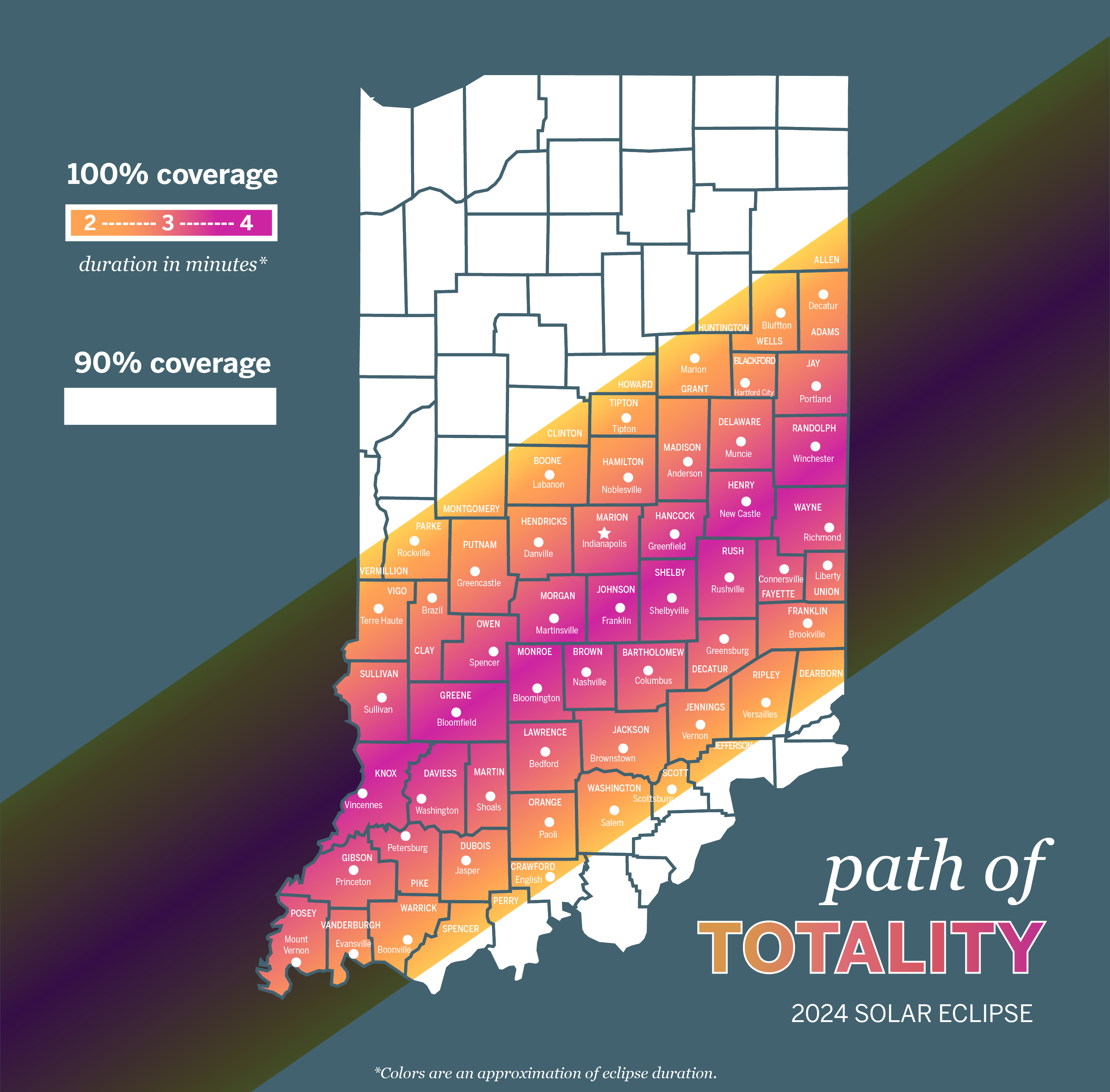
The Path of Totality
Indiana counties in the path of totality will experience a period when the sun is 100% covered. Other counties in Indiana will experience 90% coverage.
Counties in the path of totality include: Adams, Allen, Bartholomew, Blackford, Boone, Brown, Clay, Clinton, Crawford, Daviess, Dearborn, Decatur, Delaware, Dubois, Fayette, Franklin, Gibson, Grant, Greene, Hamilton, Hancock, Hendricks, Henry, Howard, Huntington, Jackson, Jay, Jefferson, Jennings, Johnson, Knox, Lawrence, Madison, Marion, Martin, Monroe, Montgomery, Morgan, Orange, Owen, Parke, Perry, Posey, Putnam, Randolph, Ripley, Rush, Scott, Shelby, Spencer, Sullivan, Tipton, Union, Vanderburgh, Vermillion, Vigo, Warrick, Washington, Wayne, and Wells.
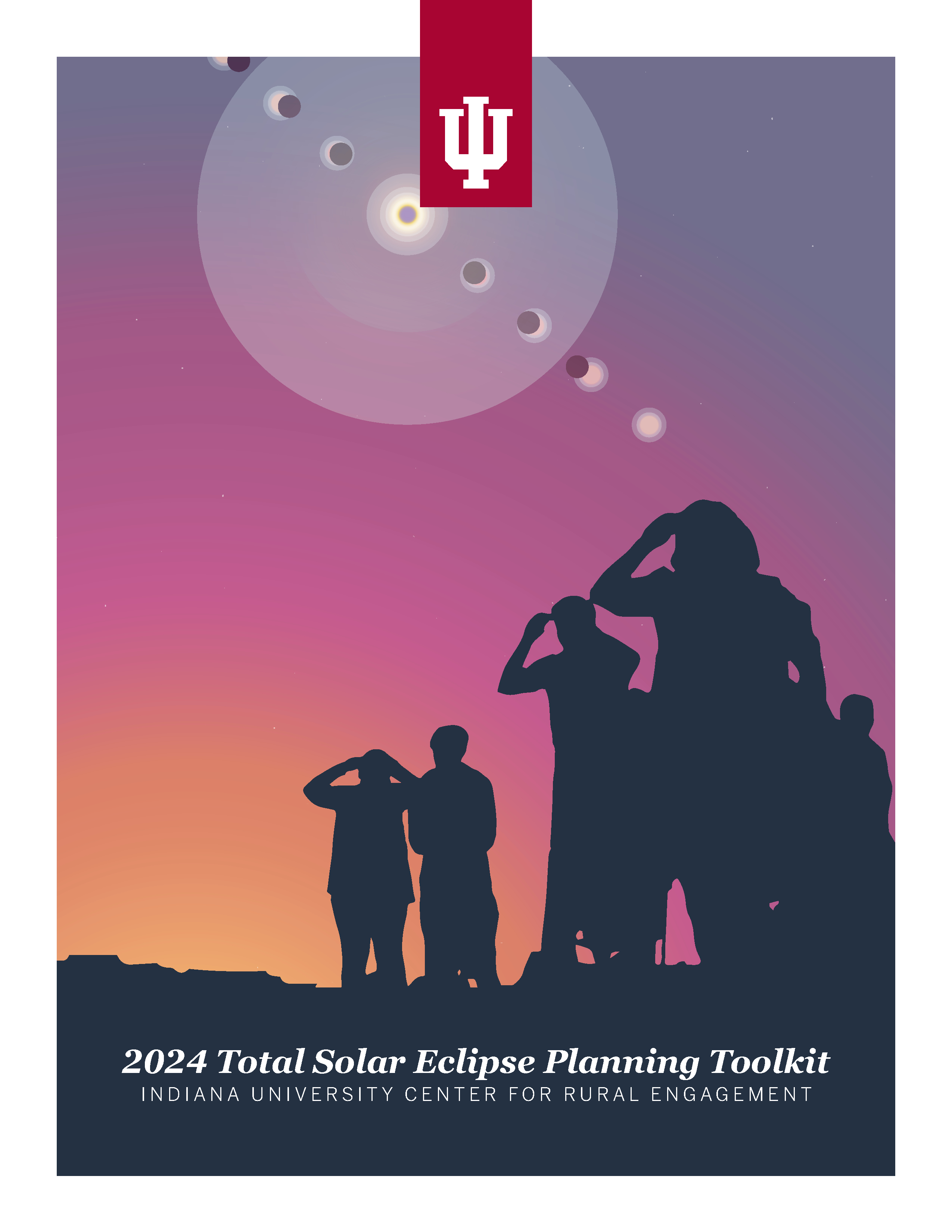
About the Total Solar Eclipse Planning Toolkit
The precise alignment required for a total solar eclipse to cross over a specific region, such as Indiana, is a rare and awe-inspiring celestial coincidence. Despite total solar eclipses occurring approximately every eighteen months worldwide, they only occur about every 400 years in the same place.
Indiana’s rural communities will face large crowds, traffic, and congestion, but we are also presented with an exciting opportunity to engage with locals and tourists. Planning early will allow community leaders to make the most of the total solar eclipse.
The 2024 Total Solar Eclipse Planning Toolkit is organized to provide background on the next total solar eclipse and resources to help you prepare yourself and your community for the anticipated excitement surrounding this event—both logistically and creatively.
Browse resources from the guide
Know the facts.
Information by state The Great American Eclipse website provides a depth of information on solar eclipses in general, with pages covering basics of the eclipse, logistics and safety considerations, and state-specific statistics based on previous eclipses. https://www.greatamericaneclipse.com
Resources and eclipse information The American Astronomical Society provides a variety of resources relating to the eclipse, covering topics ranging from eye safety to photography. Additional resources for apps, maps, books, articles, and more are located on their website. https://eclipse.aas.org
Timing the Solar Eclipse Visit the interactive Time and Date website to find when and where the eclipse crosses your area. https://www.timeanddate.com/eclipse/map/2024-april-8
Assessing the weather Locate historical and projected weather data, to get a sense of what to expect on April 8, 2024. https://www.weather.gov/wrh/climate https://www.timeanddate.com/weather
Get eclipse glasses and handheld solar viewers Visit the American Astronomical Society website to find a list of safe manufacturers and importers of eclipse glasses and handheld solar viewers, as well as their resellers and distributors. https://eclipse.aas.org/resources/solar-filters
Eclipse activities Science-Technology Activities and Resources for Libraries (STAR net) has numerous activities on their website, including methods for how to indirectly view the total solar eclipse. https://www.starnetlibraries.org/about/our-projects/solar-eclipse-activities-libraries-seal
Create a plan
Lessons learned from the 2017 eclipse Materials from the Solar Eclipse Planning workshop hosted by the American Astronomical Society are available on their website. Experts speak on topics ranging from community experience to traffic and safety. https://eclipse.aas.org/workshops/jun2023
General guidance for safe eclipse planning The Homeland Security Digital Library is a great resource for fact sheets, checklists, locally developed guidance documents, and news articles on eye safety, injury treatment, and planned mass gatherings in rural and urban areas. The Solar Eclipses: Planning Resources [September 2022] document compiles many of these sources. https://www.hsdl.org/c/view?docid=880095
Eclipse planning in Indiana The May 2023 issue of the Indiana Department of Homeland Security magazine, The Hoosier Responder, includes a section on eclipse planning in Indiana. https://www.in.gov/dhs/files/Hoosier-Responder-2023-05.pdf
Safety planning Uncover public safety planning information from the State of Indiana, including guidance for first responders, emergency management, and state agencies. https://www.in.gov/dhs/solar-eclipse-2024/planning/
Finding eclipse experts Discover amateur astronomers who may be interested in supporting your community’s eclipse planning. https://lovethenightsky.com/astronomy-clubs-in-indiana https://www.go-astronomy.com/astro-clubs-state.php?State=IN
Engage with the community
Eclipse planning and communication Dr. Kate Russo’s Community Solar Eclipse Planning guide provides further information on assembling a task force, developing a strategy, and planning for your community through the knowns and unknowns. https://www.beingintheshadow.com/wp-content/uploads/2022/02/WHITE-PAPER-SECOND-EDITION.pdf
Facilities and preparedness Mark Howell, Director of Grounded Truths LLC, created a quick guide for best practices in estimating facilities needed at eclipse events. Consider how to implement the 3 “T”s and 2 “C”s for your eclipse events. https://eclipse.aas.org/sites/eclipse.aas.org/files/Howell_Jun2023_Poster.pdf
For libraries In collaboration with the STAR Library Network, astronomers Andrew Fraknoi and Dennis Schatz created “A Guide For Public Libraries and their Communities.” This double-header contains eclipse information, safe viewing activities, ideas for eclipse events, and links to finding science-literate partners. https://eclipse.aas.org/sites/eclipse.aas.org/files/SEAL-Booklet-for-Libraries.pdf
For educators and administrators In collaboration with the National Science Teaching Association, astronomers Andrew Fraknoi and Dennis Schatz also produced two solar eclipse guides. Educators https://static.nsta.org/pdfs/SolarEclipses2023_Educator.pdf Administrators https://static.nsta.org/pdfs/SolarEclipses2023_Administrator.pdf
Additional resources and information
Learn about best practices and safety.
IU Solar Eclipse 2024 Initiative
Find and share eclipse events in Indiana
Visit Indiana Eclipse event map
Get additional resources
Purdue Extension Resource Hub
Upcoming events
Dark Side of the Moon Festival | Metamora, IN
19067 US-52, Metamora, IN 47030
Discover Downtown Washington Solar Eclipse Festival
301 E Main St, Washington, IN 47501
Eclipse 2024 in Greene County, Indiana
Gibson County Eclipse Celebration
Gibson County Fairgrounds, 709 N Embree Street, Princeton, IN
John Hay Center 2024 Total Solar Eclipse | Salem, IN
The Depot Railroad Museum, 206 S. College Avenue, Salem, IN
Total Solar Eclipse Festival | Washington, IN
Starts at 10 a.m.
301 E Main Street, Washington, IN 47501
Left in the Dark in English, Indiana
Starts at 12 p.m.
Main Street English, IN 47118
Huntingburg Eclipse | Huntingburg, IN
412 N Jackson St, Huntingburg, IN 47542
Indiana Forest Alliance 2024 Solar Eclipse Hike | Yellowwood State Forest
10 a.m. — 6 p.m.
Yellowwood Lake
The Hidden Sun | Martinsville, IN
2 p.m. — 3 p.m.
The Venue, 183 N. Jefferson Street, Martinsville, IN 46151
Edinburgh Eclipse | Edinburgh, IN
John R. Drybread Community Center, 100 E Main Cross Street, Edinburgh, IN
Solar Eclipse with Spencer Pride | Spencer, IN
Spencer Pride, 17 E. Franklin Street, Spencer, IN 47460
Cosmic Art Gallery | Versailles, IN
9 a.m. — 12 p.m.
220 E US Hwy 50 Versailles, IN
Rural Eclipse Showcase at Maxwell Hall
10 a.m. — 4 p.m.
Maxwell Hall
Indiana Forest Alliance 2024 Solar Eclipse Viewing | Tibetan Mongolian Buddhist Cultural Center
11 a.m. — 5 p.m.
Tibetan Mongolian Buddhist Cultural Center, 3655 S Snoddy Rd, Bloomington, IN 47401
Totally Awe-SUN Solar Eclipse Watch Party | Daleville, IN
12 p.m. — 6 p.m.
Hilltop Pavilion, 1590 North 900W Road, Daleville, IN 47334
KCARC Community in Totality | Vincennes, IN
12:30 p.m. — 4 p.m.
The Baker Center Field, 2900 East Carney Avenue, Vincennes, IN
Total Solar Eclipse at Mary Gray Bird Sanctuary
1 p.m. — 4 p.m.
3499 South Bird Sanctuary Road,Connersville, IN 47331
Recent news

Solar eclipse grant application opens to support arts, cultural activities in rural Indiana communities
Micro-grants for eclipse-related activities now open
2024 solar eclipse initiative to support arts, cultural activities in rural Indiana
Unlocking the mysteries of animal behavior during cosmic events
30 rural organizations receive grants to support solar eclipse arts, cultural activities
Connect with an IU faculty eclipse or astronomy expert
Center for rural engagement social media channels.
- Faculty & Staff Portal
An official website of the United States Government
- Kreyòl ayisyen
- Search Toggle search Search Include Historical Content - Any - No Include Historical Content - Any - No Search
- Menu Toggle menu
- INFORMATION FOR…
- Individuals
- Business & Self Employed
- Charities and Nonprofits
- International Taxpayers
- Federal State and Local Governments
- Indian Tribal Governments
- Tax Exempt Bonds
- FILING FOR INDIVIDUALS
- How to File
- When to File
- Where to File
- Update Your Information
- Get Your Tax Record
- Apply for an Employer ID Number (EIN)
- Check Your Amended Return Status
- Get an Identity Protection PIN (IP PIN)
- File Your Taxes for Free
- Bank Account (Direct Pay)
- Payment Plan (Installment Agreement)
- Electronic Federal Tax Payment System (EFTPS)
- Your Online Account
- Tax Withholding Estimator
- Estimated Taxes
- Where's My Refund
- What to Expect
- Direct Deposit
- Reduced Refunds
- Amend Return
Credits & Deductions
- INFORMATION FOR...
- Businesses & Self-Employed
- Earned Income Credit (EITC)
- Child Tax Credit
- Clean Energy and Vehicle Credits
- Standard Deduction
- Retirement Plans
Forms & Instructions
- POPULAR FORMS & INSTRUCTIONS
- Form 1040 Instructions
- Form 4506-T
- POPULAR FOR TAX PROS
- Form 1040-X
- Circular 230
Get ahead of the tax deadline; act now to file, pay or request an extension
More in news.
- Topics in the News
- News Releases for Frequently Asked Questions
- Multimedia Center
- Tax Relief in Disaster Situations
- Inflation Reduction Act
- Taxpayer First Act
- Tax Scams/Consumer Alerts
- The Tax Gap
- Fact Sheets
- IRS Tax Tips
- e-News Subscriptions
- IRS Guidance
- Media Contacts
- IRS Statements and Announcements
IR-2024-88, April 2, 2024
WASHINGTON — With the April 15 tax deadline approaching, the IRS reminds taxpayers there is still time file their federal income tax return electronically and request direct deposit.
Filing electronically reduces tax return errors as tax software does the calculations, flags common errors and prompts taxpayers for missing information. Most people qualify for electronic filing at no cost and, when they choose direct deposit, receive their refund within 21 days.
Free electronic filing options
Taxpayers with income of $79,000 or less in 2023 can use IRS Free File guided tax software now through Oct 15. IRS Free Fillable forms , a part of this program, is available at no cost to taxpayers of any income level and provides electronic forms for people to fill out and e-file themselves.
IRS Direct File is now open to all eligible taxpayers in 12 pilot states to decide if it is the right option for them to file their 2023 federal tax returns online, for free, directly with the IRS. Go to the Direct File website for more information about Direct File pilot eligibility and the 12 participating states.
Through a network of community partnerships, the Volunteer Income Tax Assistance (VITA) and Tax Counseling for the Elderly (TCE) programs offer free tax return preparation to eligible people in the community by IRS certified volunteers.
MilTax , a Department of Defense program, generally offers free return preparation and electronic filing software for federal income tax returns and up to three state income tax returns for all military members, and some veterans, with no income limit.
Use Where's My Refund? to check refund status
The Where's My Refund? tool will normally show a refund status within 24 hours after e-filing a 2023 tax return, three to four days after e-filing a 2021 or 2022 return and four weeks after filing a tax return by mail. To use the tool, taxpayers need their Social Security number, filing status and exact refund amount. Taxpayers can also check Where's My Refund? by downloading our free mobile app, IRS2Go , from an iPhone or Android device. The tool updates once a day, so people don't need to check more often.
Taxpayers that owe on their tax return
IRS reminds people they can avoid paying interest and some penalties by filing their tax return and, if they have a balance due, paying the total amount due by the tax deadline of Monday, April 15. For residents of Maine or Massachusetts, the tax deadline is Wednesday, April 17, due to Patriot’s Day and Emancipation Day holidays.
Payment options for individuals to pay in full
The IRS offers various options for taxpayers who are making tax payments :
- Direct Pay – Make a payment directly from a checking or savings account without any fees or registration.
- Pay with debit card, credit card or digital wallet – Make a payment directly from a debit card, credit card or digital wallet. Processing fees are paid to the payment processors. The IRS doesn’t receive any fees for these payments. Authorized card processors and phone numbers are available at IRS.gov/payments .
- Electronic Federal Tax Payment System (EFTPS) – This free service gives taxpayers a safe, convenient way to pay individual and business taxes by phone or online. To enroll and for more information, taxpayers can call 800-555-4477 or visit eftps.gov .
- Electronic funds withdrawal – Taxpayers can file and pay electronically from their bank account when using tax preparation software or a tax professional. This option is free and only available when electronically filing a tax return.
- Check or money order – Payments made by check or money order should be made payable to the “United States Treasury.”
- Cash – Make a cash payment through a retail partner and other methods. The IRS urges taxpayers choosing this option to start early because it involves a four-step process. Details, including answers to frequently asked questions, are at IRS.gov/paywithcash .
Payment options for individuals unable to pay their taxes in full
Taxpayers that are unable to pay in full by the tax deadline, should pay what they can now and apply for an online payment plan . They can receive an immediate response of payment plan acceptance or denial without calling or writing to the IRS. Online payment plan options include:
- Short-term payment plan – The total balance owed is less than $100,000 in combined tax, penalties and interest. Additional time of up to 180 days to pay the balance in full.
- Long-term payment plan – The total balance owed is less than $50,000 in combined tax, penalties and interest. Pay in monthly payments for up to 72 months. Payments may be set up using direct debit (automatic bank withdraw) which eliminates the need to send in a payment each month, saving postage costs and reducing the chance of default. For balances between $25,000 and $50,000, direct debit is required.
Though interest and late-payment penalties continue to accrue on any unpaid taxes after April 15, the failure to pay penalty is cut in half while an installment agreement is in effect. Find more information about the costs of payment plans on the IRS’ Additional information on payment plans webpage.
Unable to file by the April 15 deadline?
Individuals unable to file their tax return by the tax deadline can apply for a tax-filing extension in the following ways:
- Individual tax filers, regardless of income, can electronically request an automatic tax-filing extension through IRS Free File by filing a Form 4868, Application for Automatic Extension of Time to File U.S. Individual Income Tax Return PDF .
- Make an electronic payment using Direct Pay, debit card, credit card or digital wallet and indicate the payment is for an extension.
- Mail Form 4868 by the tax deadline.
Things people should know when requesting a tax-filing extension:
- Tax-filing extension requests are due by the tax deadline date, and it does not give an extension of time to pay the taxes.
- Avoid some penalties by estimating and paying the tax due by the tax deadline.
- Special rules for tax deadlines and automatic tax-filing extensions may apply for taxpayers serving in a combat zone or qualified hazardous duty areas , living outside the United States , and people living in certain disaster areas . They may not need to submit a tax-filing extension; however, people should check to see if they qualify before the tax deadline.
Use IRS.gov for the quickest and easiest information
Taxpayers can visit IRS.gov 24 hours a day for answers to tax questions , more tips and resources by visiting the Let us help you page.
.jpg)
- Meet Ron DeSantis
- Scheduling Requests
- Photos with Ron DeSantis
Contact Governor DeSantis
- Meet Casey DeSantis
- Photos with First Lady DeSantis
- Contact First Lady DeSantis
- Meet Jeanette Nuñez
- Photos with Lt. Gov. Jeanette Nuñez
- Email the Lt. Governor
- News Releases Archive
- Media Inquiries
- Long Range Program Plan
- Gubernatorial Appointments
- Request a Public Record
- Press Briefings
- Executive Orders
- Internships
- Open Government
- Notary Section
- Report Waste, Fraud and Abuse
- MyFlorida.com
- Flag Information
- Volunteer Florida
- Explore Adoption
- Legislation
- Governor’s Office Contacts
Governor Ron DeSantis Announces $450 Million for a Second Consecutive Year of Toll Relief for Florida’s Families
Nearly $1 Billion in Toll Savings Over Two Years
TALLAHASSEE, Fla.— Today, Governor Ron DeSantis announced a second consecutive year of the highly successful Toll Relief Program, which will cut the toll rates of frequent commuters in half by applying a toll credit from April 2024 to March 2025. Launched last year, drivers utilizing Florida-based toll transponders (including SunPass and other Florida-based transponders) and having 35 or more qualifying toll transactions monthly will receive a 50 percent credit to their account. A map of toll facilities included in this year’s program can be found here.
“I am pleased to have secured an additional $450 million for toll relief in Florida that will alleviate costs on our commuting families,” said Governor Ron DeSantis. “Florida is committed to good fiscal governance, and I am committed to returning our surpluses back to the taxpayers in the form of tax breaks and toll savings.”
In 2023, the Toll Relief Program delivered $500 million in substantial savings to over 1.2 million commuters, equating to an approximate savings of $400 per individual. Florida drivers can expect another year of toll savings from April 2024 to March 2025.
“Florida families grappling with persistent inflation due to the Biden administration’s harmful economic policies can rest assured that we are doing all we can to support Floridians, including another historic year of toll relief,” said Lieutenant Governor Jeanette Nuñez. “Our toll relief program provides meaningful cost savings to frequent commuters who rely on our toll roads to provide for their families.”
“FDOT is thrilled to offer the Toll Relief Program to help Floridians with the challenges of rising costs of life. Customers are at the center of all we do at FDOT, and this program will truly make an immediate impact on the everyday lives of our customers,” said Florida Department of Transportation Secretary Jared W. Perdue, P.E. “In addition to saving money, drivers in South Florida will soon be saving time as we begin construction of the Golden Glades Interchange, the first project of Governor DeSantis’ Moving Florida Forward Infrastructure Initiative projects to break ground.”
Today, the Florida Department of Transportation (FDOT) also commenced construction on the Golden Glades Interchange project (GGI) in Miami-Dade County, designed to alleviate congestion in South Florida.
The GGI project represents the reconstruction of a pivotal junction that South Florida commuters rely upon where five major roadways intersect: I-95, Palmetto Expressway, Florida’s Turnpike, State Road 9, and NW 7th Avenue. With over 400,000 vehicles passing through this intersection daily, it’s a crucial component of the local and regional transportation network. Because of Moving Florida Forward, this project will be completed 7–10 years sooner than expected.
Floridians seeking to learn more about the Toll Relief Program can do so here.
Comments are closed.
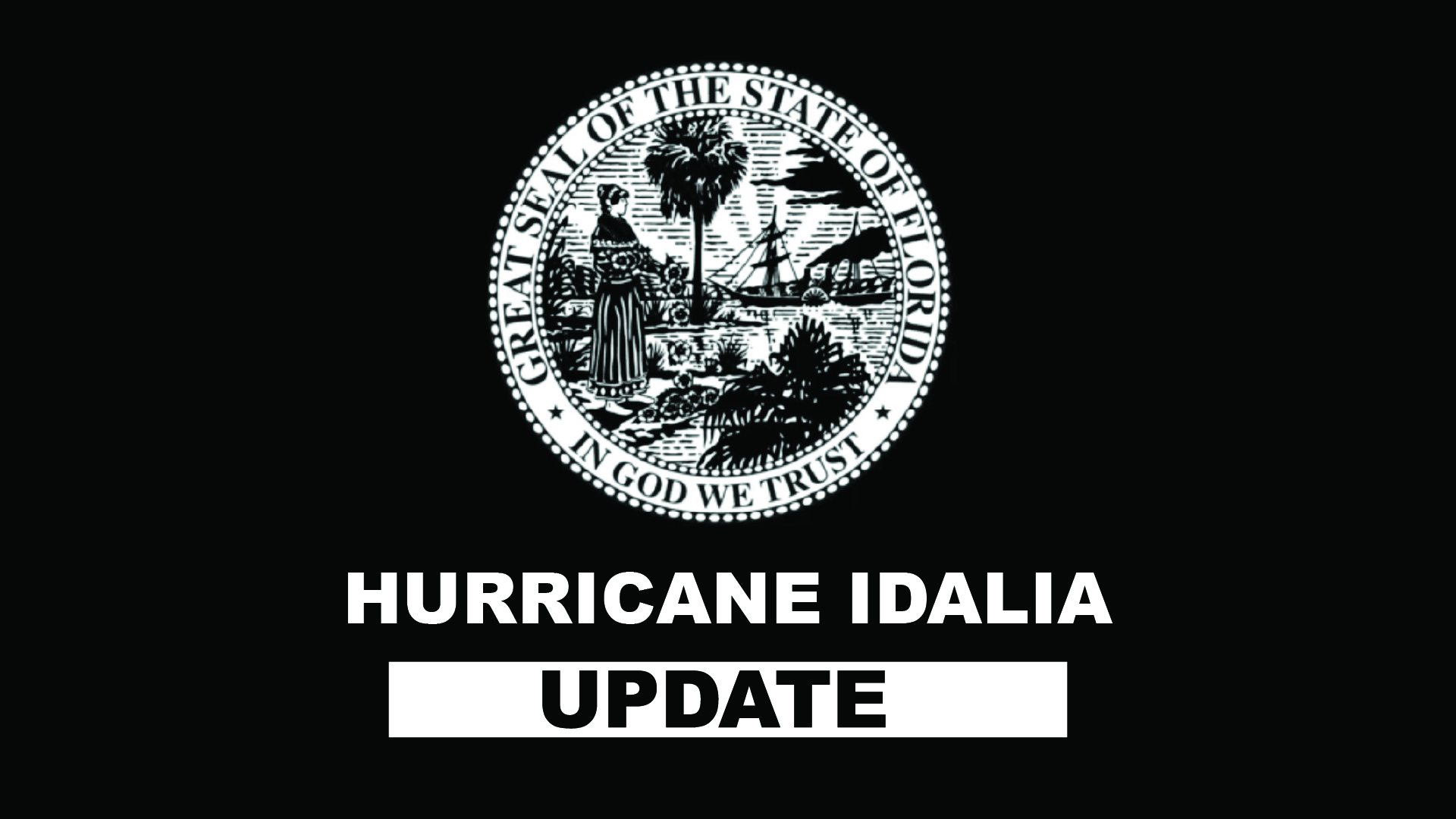
- Share full article
Advertisement
Supported by
New York Takes Crucial Step Toward Making Congestion Pricing a Reality
The board of the Metropolitan Transportation Authority voted to approve a new $15 toll to drive into Manhattan. The plan still faces challenges from six lawsuits before it can begin in June.

By Winnie Hu and Ana Ley
New York City completed a crucial final step on Wednesday in a decades-long effort to become the first American city to roll out a comprehensive congestion pricing program, one that aims to push motorists out of their cars and onto mass transit by charging new tolls to drive into Midtown and Lower Manhattan.
The program could start as early as mid-June after the board of the Metropolitan Transportation Authority, the state agency that will install and manage the program, voted 11-to-1 to approve the final tolling rates, which will charge most passenger cars $15 a day to enter at 60th Street and below in Manhattan. The program is expected to reduce traffic and raise $1 billion annually for public transit improvements.
It was a historic moment for New York’s leaders and transportation advocates after decades of failed attempts to advance congestion pricing even as other gridlocked cities around the world, including London, Stockholm and Singapore, proved that similar programs could reduce traffic and pollution.
While other American cities have introduced related concepts by establishing toll roads or closing streets to traffic, the plan in New York is unmatched in ambition and scale.
Congestion pricing is expected to reduce the number of vehicles that enter Lower Manhattan by about 17 percent, according to a November study by an advisory committee reporting to the M.T.A. The report also said that the total number of miles driven in 28 counties across the region would be reduced.
“This was the right thing to do,” Janno Lieber, the authority’s chairman and chief executive, said after the vote. “New York has more traffic than any place in the United States, and now we’re doing something about it.”
Congestion pricing has long been a hard sell in New York, where many people commute by car from the boroughs outside of Manhattan and the suburbs, in part because some of them do not have access to public transit.
New York State legislators finally approved congestion pricing in 2019 after Gov. Andrew M. Cuomo helped push it through. A series of recent breakdowns in the city’s subway system had underscored the need for billions of dollars to update its aging infrastructure.
It has taken another five years to reach the starting line. Before the tolling program can begin, it must be reviewed by the Federal Highway Administration, which is expected to approve it.
Congestion pricing also faces legal challenges from six lawsuits that have been brought by elected officials and residents from across the New York region. Opponents have increasingly mobilized against the program in recent months, citing the cost of the tolls and the potential environmental effects from shifting traffic and pollution to other areas as drivers avoid the tolls.
A court hearing is scheduled for April 3 and 4 on a lawsuit brought by the State of New Jersey, which is seen as the most serious legal challenge. The mayor of Fort Lee, N.J., Mark J. Sokolich, has filed a related lawsuit.
Four more lawsuits have been brought in New York: by Ed Day, the Rockland County executive; by Vito Fossella, the Staten Island borough president, and the United Federation of Teachers; and by two separate groups of city residents.
Amid the litigation, M.T.A. officials have suspended some capital construction projects that were to be paid for by the program, and they said at a committee meeting on Monday that crucial work to modernize subway signals on the A and C lines had been delayed.
Nearly all the toll readers have been installed, and will automatically charge drivers for entering the designated congestion zone at 60th Street or below. There is no toll for leaving the zone or driving around in it. Through traffic on Franklin D. Roosevelt Drive and the West Side Highway will not be tolled.
Under the final tolling structure, which was based on recommendations by the advisory panel, most passenger vehicles will be charged $15 a day from 5 a.m. to 9 p.m. on weekdays, and from 9 a.m. to 9 p.m. on weekends. The toll will be $24 for small trucks and charter buses, and will rise to $36 for large trucks and tour buses. It will be $7.50 for motorcycles.
Those tolls will be discounted by 75 percent at night, dropping the cost for a passenger vehicle to $3.75.
Fares will go up by $1.25 for taxis and black car services, and by $2.50 for Uber and Lyft. Passengers will be responsible for paying the new fees, and they will be added to every ride that begins, ends or occurs within the congestion zone. There will be no nighttime discounts. (The new fees come on top of an existing congestion surcharge that was imposed on for-hire vehicles in 2019.)
The tolls will mostly be collected using the E-ZPass system. Electronic detection points have been placed at entrances and exits to the tolling zone. Drivers who do not use an E-ZPass will pay significantly higher fees — for instance, $22.50 instead of $15 during peak hours for passenger vehicles.
Emergency vehicles like fire trucks, ambulances and police cars, as well as vehicles carrying people with disabilities, were exempted from the new tolls under the state’s congestion pricing legislation .
As for discounts, low-income drivers who make less than $50,000 annually can apply to receive half off the daytime toll after their first 10 trips in a calendar month. In addition, low-income residents of the congestion zone who make less than $60,000 a year can apply for a state tax credit.
All drivers entering the zone directly from four tolled tunnels — the Lincoln, Holland, Hugh L. Carey and Queens-Midtown — will receive a “crossing credit” that will be applied against the daytime toll. The credit will be $5 round-trip for passenger vehicles, $12 for small trucks and intercity and charter buses, $20 for large trucks and tour buses, and $2.50 for motorcycles. No credits will be offered at night.
Grace Ashford contributed reporting.
Winnie Hu is a Times reporter covering the people and neighborhoods of New York City. More about Winnie Hu
Ana Ley is a Times reporter covering New York City’s mass transit system and the millions of passengers who use it. More about Ana Ley
Iran says senior ISIS member and others arrested
The Reuters Daily Briefing newsletter provides all the news you need to start your day. Sign up here.
<a href="mailto:[email protected]" target="_blank">[email protected]</a> Editing by William Mallard and Frances Kerry
Our Standards: The Thomson Reuters Trust Principles. , opens new tab

Israel launched air strikes on the Bekaa Valley, in eastern Lebanon early on Sunday, two Lebanese security sources told Reuters, a few hours after the downing of an Israeli drone over Lebanon.
A British Royal Navy ship will supply aid to Gaza as part of an international effort to help set up a new humanitarian maritime corridor in early May, the foreign office and ministry of defence said on Saturday.

Pellegrini wins Slovak presidential election in boost for pro-Russian PM Fico
At stake is whether Prime Minister Robert Fico, who took power in October for the fourth time, will get an ally in the presidential palace or an opponent who could challenge his pro-Russian stance and plans to reform criminal law and the media.

- Newsletters
- Account Activating this button will toggle the display of additional content Account Sign out
That Viral Essay Wasn’t About Age Gaps. It Was About Marrying Rich.
But both tactics are flawed if you want to have any hope of becoming yourself..
Women are wisest, a viral essay in New York magazine’s the Cut argues , to maximize their most valuable cultural assets— youth and beauty—and marry older men when they’re still very young. Doing so, 27-year-old writer Grazie Sophia Christie writes, opens up a life of ease, and gets women off of a male-defined timeline that has our professional and reproductive lives crashing irreconcilably into each other. Sure, she says, there are concessions, like one’s freedom and entire independent identity. But those are small gives in comparison to a life in which a person has no adult responsibilities, including the responsibility to become oneself.
This is all framed as rational, perhaps even feminist advice, a way for women to quit playing by men’s rules and to reject exploitative capitalist demands—a choice the writer argues is the most obviously intelligent one. That other Harvard undergraduates did not busy themselves trying to attract wealthy or soon-to-be-wealthy men seems to flummox her (taking her “high breasts, most of my eggs, plausible deniability when it came to purity, a flush ponytail, a pep in my step that had yet to run out” to the Harvard Business School library, “I could not understand why my female classmates did not join me, given their intelligence”). But it’s nothing more than a recycling of some of the oldest advice around: For women to mold themselves around more-powerful men, to never grow into independent adults, and to find happiness in a state of perpetual pre-adolescence, submission, and dependence. These are odd choices for an aspiring writer (one wonders what, exactly, a girl who never wants to grow up and has no idea who she is beyond what a man has made her into could possibly have to write about). And it’s bad advice for most human beings, at least if what most human beings seek are meaningful and happy lives.
But this is not an essay about the benefits of younger women marrying older men. It is an essay about the benefits of younger women marrying rich men. Most of the purported upsides—a paid-for apartment, paid-for vacations, lives split between Miami and London—are less about her husband’s age than his wealth. Every 20-year-old in the country could decide to marry a thirtysomething and she wouldn’t suddenly be gifted an eternal vacation.
Which is part of what makes the framing of this as an age-gap essay both strange and revealing. The benefits the writer derives from her relationship come from her partner’s money. But the things she gives up are the result of both their profound financial inequality and her relative youth. Compared to her and her peers, she writes, her husband “struck me instead as so finished, formed.” By contrast, “At 20, I had felt daunted by the project of becoming my ideal self.” The idea of having to take responsibility for her own life was profoundly unappealing, as “adulthood seemed a series of exhausting obligations.” Tying herself to an older man gave her an out, a way to skip the work of becoming an adult by allowing a father-husband to mold her to his desires. “My husband isn’t my partner,” she writes. “He’s my mentor, my lover, and, only in certain contexts, my friend. I’ll never forget it, how he showed me around our first place like he was introducing me to myself: This is the wine you’ll drink, where you’ll keep your clothes, we vacation here, this is the other language we’ll speak, you’ll learn it, and I did.”
These, by the way, are the things she says are benefits of marrying older.
The downsides are many, including a basic inability to express a full range of human emotion (“I live in an apartment whose rent he pays and that constrains the freedom with which I can ever be angry with him”) and an understanding that she owes back, in some other form, what he materially provides (the most revealing line in the essay may be when she claims that “when someone says they feel unappreciated, what they really mean is you’re in debt to them”). It is clear that part of what she has paid in exchange for a paid-for life is a total lack of any sense of self, and a tacit agreement not to pursue one. “If he ever betrayed me and I had to move on, I would survive,” she writes, “but would find in my humor, preferences, the way I make coffee or the bed nothing that he did not teach, change, mold, recompose, stamp with his initials.”
Reading Christie’s essay, I thought of another one: Joan Didion’s on self-respect , in which Didion argues that “character—the willingness to accept responsibility for one’s own life—is the source from which self-respect springs.” If we lack self-respect, “we are peculiarly in thrall to everyone we see, curiously determined to live out—since our self-image is untenable—their false notions of us.” Self-respect may not make life effortless and easy. But it means that whenever “we eventually lie down alone in that notoriously un- comfortable bed, the one we make ourselves,” at least we can fall asleep.
It can feel catty to publicly criticize another woman’s romantic choices, and doing so inevitably opens one up to accusations of jealousy or pettiness. But the stories we tell about marriage, love, partnership, and gender matter, especially when they’re told in major culture-shaping magazines. And it’s equally as condescending to say that women’s choices are off-limits for critique, especially when those choices are shared as universal advice, and especially when they neatly dovetail with resurgent conservative efforts to make women’s lives smaller and less independent. “Marry rich” is, as labor economist Kathryn Anne Edwards put it in Bloomberg, essentially the Republican plan for mothers. The model of marriage as a hierarchy with a breadwinning man on top and a younger, dependent, submissive woman meeting his needs and those of their children is not exactly a fresh or groundbreaking ideal. It’s a model that kept women trapped and miserable for centuries.
It’s also one that profoundly stunted women’s intellectual and personal growth. In her essay for the Cut, Christie seems to believe that a life of ease will abet a life freed up for creative endeavors, and happiness. But there’s little evidence that having material abundance and little adversity actually makes people happy, let alone more creatively generativ e . Having one’s basic material needs met does seem to be a prerequisite for happiness. But a meaningful life requires some sense of self, an ability to look outward rather than inward, and the intellectual and experiential layers that come with facing hardship and surmounting it.
A good and happy life is not a life in which all is easy. A good and happy life (and here I am borrowing from centuries of philosophers and scholars) is one characterized by the pursuit of meaning and knowledge, by deep connections with and service to other people (and not just to your husband and children), and by the kind of rich self-knowledge and satisfaction that comes from owning one’s choices, taking responsibility for one’s life, and doing the difficult and endless work of growing into a fully-formed person—and then evolving again. Handing everything about one’s life over to an authority figure, from the big decisions to the minute details, may seem like a path to ease for those who cannot stomach the obligations and opportunities of their own freedom. It’s really an intellectual and emotional dead end.
And what kind of man seeks out a marriage like this, in which his only job is to provide, but very much is owed? What kind of man desires, as the writer cast herself, a raw lump of clay to be molded to simply fill in whatever cracks in his life needed filling? And if the transaction is money and guidance in exchange for youth, beauty, and pliability, what happens when the young, beautiful, and pliable party inevitably ages and perhaps feels her backbone begin to harden? What happens if she has children?
The thing about using youth and beauty as a currency is that those assets depreciate pretty rapidly. There is a nearly endless supply of young and beautiful women, with more added each year. There are smaller numbers of wealthy older men, and the pool winnows down even further if one presumes, as Christie does, that many of these men want to date and marry compliant twentysomethings. If youth and beauty are what you’re exchanging for a man’s resources, you’d better make sure there’s something else there—like the basic ability to provide for yourself, or at the very least a sense of self—to back that exchange up.
It is hard to be an adult woman; it’s hard to be an adult, period. And many women in our era of unfinished feminism no doubt find plenty to envy about a life in which they don’t have to work tirelessly to barely make ends meet, don’t have to manage the needs of both children and man-children, could simply be taken care of for once. This may also explain some of the social media fascination with Trad Wives and stay-at-home girlfriends (some of that fascination is also, I suspect, simply a sexual submission fetish , but that’s another column). Fantasies of leisure reflect a real need for it, and American women would be far better off—happier, freer—if time and resources were not so often so constrained, and doled out so inequitably.
But the way out is not actually found in submission, and certainly not in electing to be carried by a man who could choose to drop you at any time. That’s not a life of ease. It’s a life of perpetual insecurity, knowing your spouse believes your value is decreasing by the day while his—an actual dollar figure—rises. A life in which one simply allows another adult to do all the deciding for them is a stunted life, one of profound smallness—even if the vacations are nice.
Free AI Writing Resources
Improve your writing with ai.
Improve your academic performance and write like a pro without cheating or jeopardizing your degree. Get access to free AI writing tools, useful ChatGPT prompts, the latest articles about AI, and more.
Start writing

AI tools to help you write with confidence
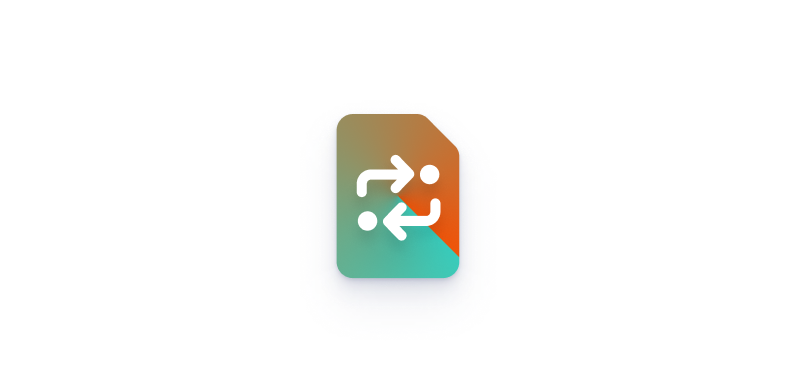
Paraphrasing Tool
Avoid accidental plagiarism and make your text sound better. Paraphrase now

Grammar Checker
Get instant feedback on your writing. Don’t let typos bring down your grade. Grammar check now
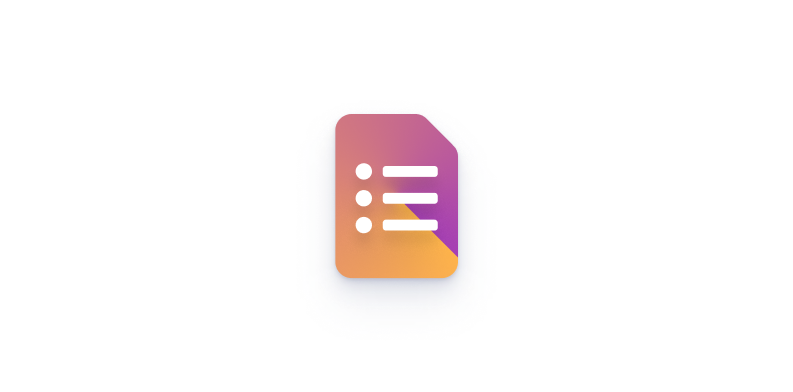
Read more in less time. Distill lengthy and complex texts down to their key points. Summarize now
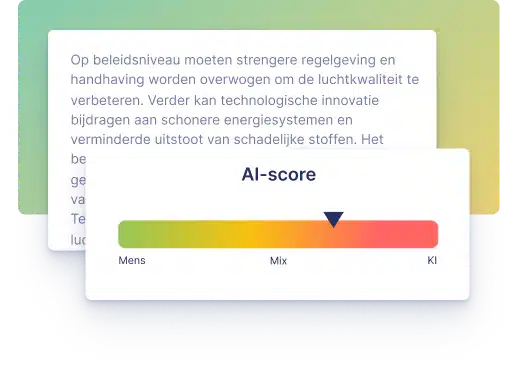
Detect AI-generated content
Detect AI-generated content like ChatGPT3.5, GPT4 and Google Bard in seconds
Try AI Detector

And fix any mistakes with AI
Scribbr’s AI Proofreader checks your document and corrects spelling, grammar, and punctuation mistakes with near-human accuracy and the efficiency of AI!
Try the new AI Proofreader
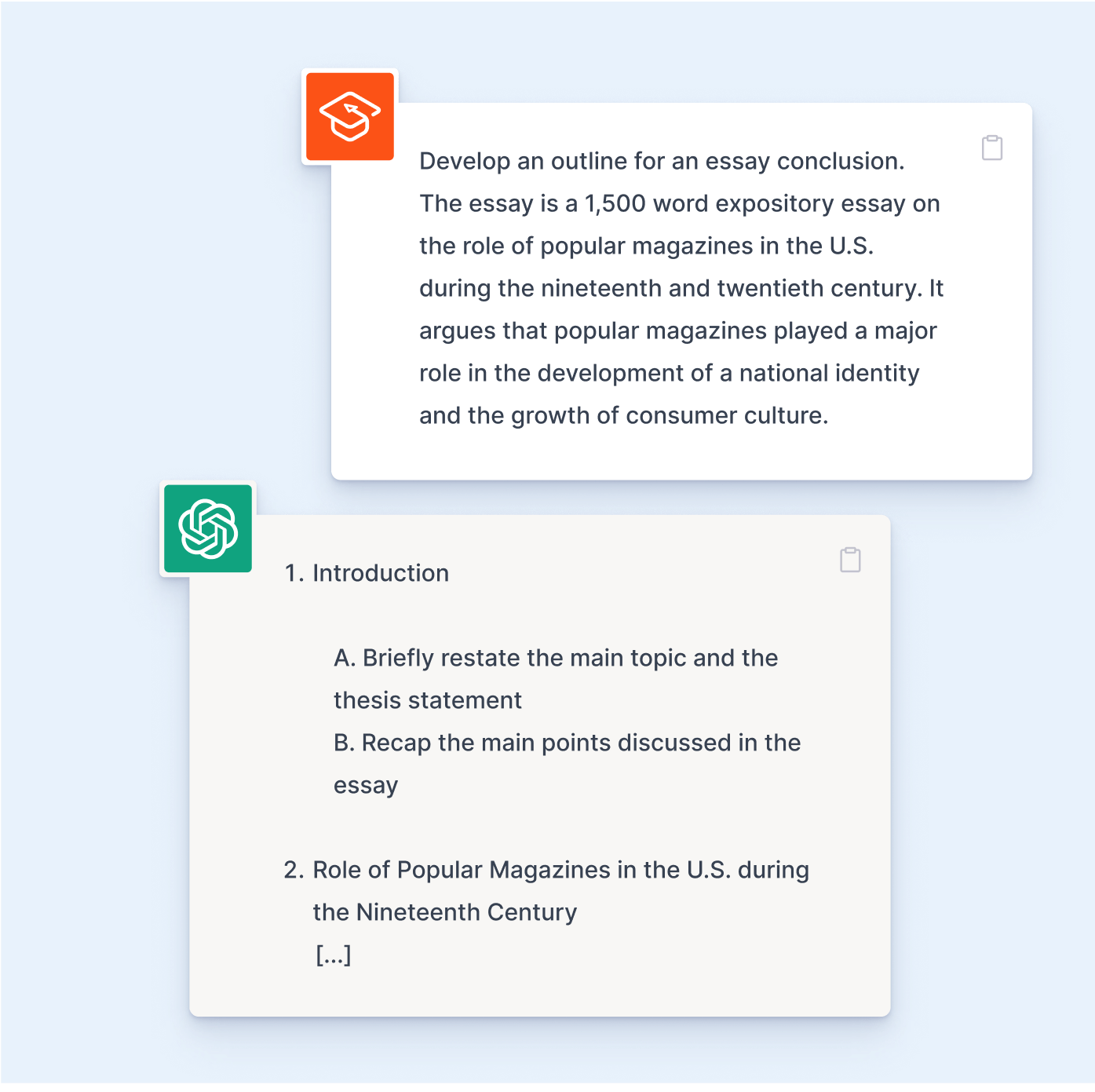
ChatGPT prompting 101
ChatGPT can be a great study assistant, but the responses you get are only as good as the input you provide. Keep these four tips in mind to craft great ChatGPT prompts :
- Give ChatGPT a role to play
- Be precise and provide context
- Test and improve your prompts
ChatGPT prompts
100% ethical ChatGPT prompts
Write a research question
- Generate three possible research questions for an argumentative high school essay on the following topic: “The long-term impact of the Covid-19 pandemic.”
Brainstorm topic ideas
- Generate 10 questions to help me brainstorm topics for my college admission essay.
Quiz yourself
- I’m learning about [ insert topic here ]. Please create a practice test with 4 multiple-choice questions, each with 4 possible answers and solutions (show the solutions separately under the multiple-choice test).
Learn by metaphors and stories
- I ‘m learning about [ insert topic here ]. Convert the key lessons from this topic into engaging stories and metaphors to aid my memorization.
Find limitations
- What are some common limitations or critiques of research in the field of [ insert topic here ]?
Learn about a topic
- I want to learn about [ insert topic here ]. Identify and share the most important 20% of learnings from this topic that will help me understand 80% of it. Explain [ insert topic here ] to me without jargon and buzzwords, in the most simplified way possible.
Source recommendations
- What types of sources can I use to write an essay on the following research question? “ [insert research question here] ?”
Overview of arguments
- What are the main arguments or debates in the literature on [ insert topic here ]?
Develop an outline
- Develop an outline for an argumentative high school essay with the following research question: “ [insert research question here] ?”The essay will be about 4 pages long.
Latest articles
Learn more about ai, citing chatgpt, using chatgpt for assignments, how do ai detectors work, using chatgpt in your studies, ai tool reviews.

Best AI Detectors
AI detectors detect text generated by AI tools like ChatGPT. We tested various example texts, including ChatGPT-generated, mixed AI–human, and fully human, as well as text generated by paraphrasing tools. Check out the best AI detectors

Best Paraphrasing Tools
Paraphrasing tools improve your writing by automatically rewriting text. We tested seven popular free and premium paraphrasers to determine their reliability when it comes to producing correct, readable English. Check out the best paraphrasing tools

Best Grammar Checkers
We tested 10 popular free grammar checkers , evaluating their accuracy in fixing errors (and introducing new ones) and user-friendliness. Find out what grammar checker to use

Best summarizers
Summarizers are ideal for distilling lengthy and complicated texts down to their key points—but which summarizers are most accurate? We tested 11 summarizers to find out. Discover the most accurate summarizer
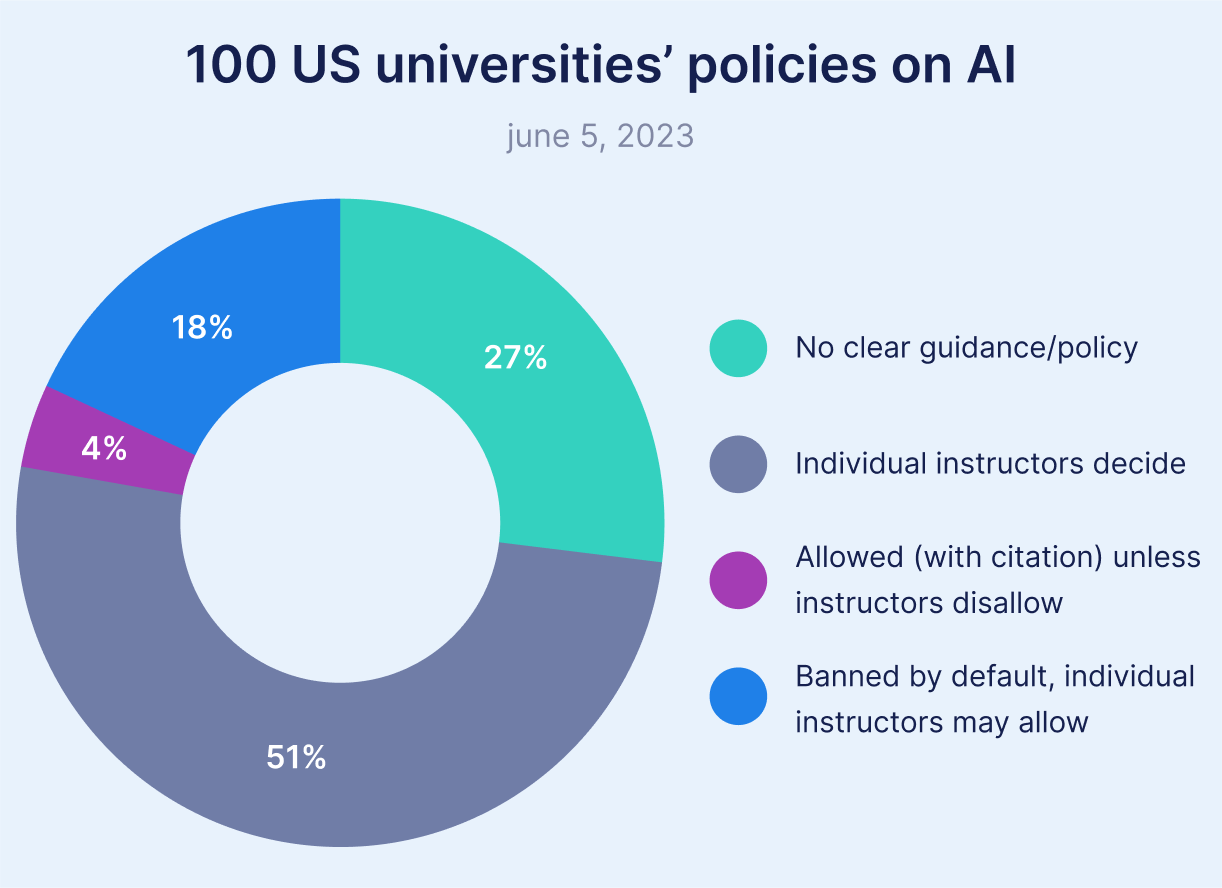
Universities’ policies on AI
Based on our analysis of the top 100 US universities, it appears that the majority haven’t established clear-cut regulations concerning AI tools at this time. As a result, it is up to individual professors to determine what is permissible in their respective courses.
Check out policies in detail
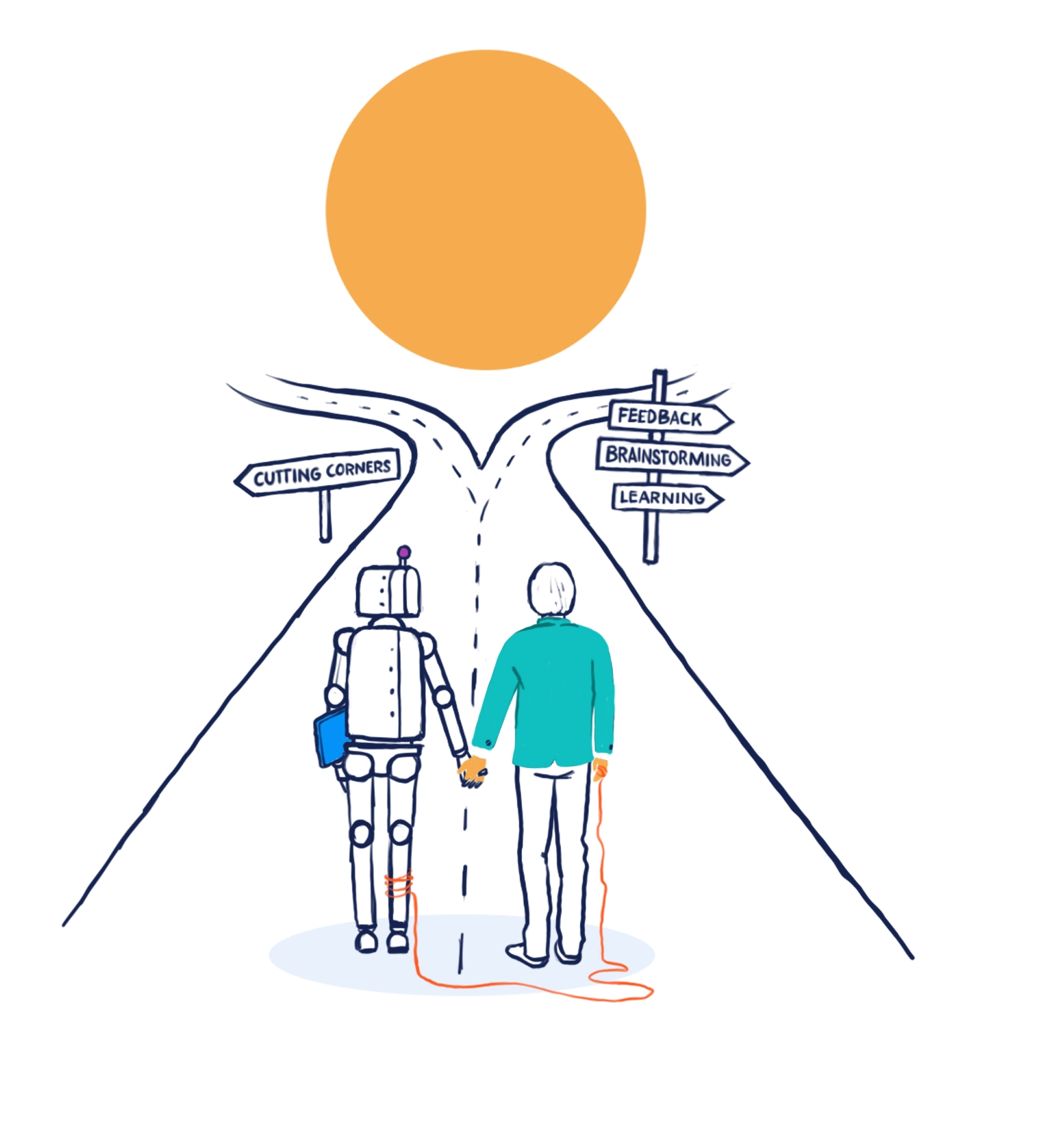
Scribbr's stance on AI
We think educators should be open to the possibilities presented by AI-powered tools. Students should employ these tools in an honest and responsible way, using them to facilitate learning rather than to skip steps in the learning process.
You can use such tools in a responsible way that benefits your education during the research and writing process by relying on them for the following:
- Brainstorming and explore topics in an interactive way
- Assisting with programming and coding
- Developing research questions and paper outlines
- Asking for feedback on your own writing
Write faster, study better – all for free

IMAGES
VIDEO
COMMENTS
Analyse the task → Gather content → Plan → Draft → Edit. This tool may help you to bridge from planning to drafting by helping you arrange your sentences in a logical order. It also provides tips for each component of an essay - the introduction, body, and conclusion. It can be used to improve your understanding of essay writing in ...
Regarding citations, Scribbr provides comprehensive guides and examples for various citation styles. Whether I needed help with APA, MLA, Chicago, or any other citation style, Scribbr had me covered. The clear and concise explanations made it simple to understand and implement the correct citation format in my academic work.
Use Essay Map to plan and organize your essays with an interactive graphic organizer. Learn expository writing skills and improve your grades.
Essay Planner template. Helpful for Education Idea Generation Mind Mapping Planning. Ayoa's Essay Planner template simplifies the process of writing an academic essay by allowing you to brainstorm great ideas, then put your arguments into a clear and defined structure ready for you to turn into a cohesive and well-researched paper.
Revised on July 23, 2023. An essay outline is a way of planning the structure of your essay before you start writing. It involves writing quick summary sentences or phrases for every point you will cover in each paragraph, giving you a picture of how your argument will unfold. You'll sometimes be asked to submit an essay outline as a separate ...
The basic structure of an essay always consists of an introduction, a body, and a conclusion. But for many students, the most difficult part of structuring an essay is deciding how to organize information within the body. This article provides useful templates and tips to help you outline your essay, make decisions about your structure, and ...
Grades. Launch the tool! Expository writing is an increasingly important skill for elementary, middle, and high school students to master. This interactive graphic organizer helps students develop an outline that includes an introductory statement, main ideas they want to discuss or describe, supporting details, and a conclusion that summarizes ...
Organize evidence, strengthen supporting arguments, and hammer your main point home with our essay planning sheet. Create flow: Maintain a cohesive writing process with an essay planning template that clarifies how one section leads to the next. Evaluate your argument from all sides: Crystallize your claim and test it out from new angles in a ...
Essay plans. An essay plan is a way to identify, select, and order the points you want to make in your essay. It helps you to work out your argument and your structure before writing, which should make the writing process more efficient and focussed. Sometimes essay plans are set as formative assignments so tutors can provide feedback before ...
The 7-Step Guide on How to write an Essay Plan. Figure out your Essay Topic (5 minutes) Gather your Sources and take Quick Notes (20 minutes) Brainstorm using a Mind-Map (10 minutes) Arrange your Topics (2 minutes) Write your topic Sentences (5 minutes) Write a No-Pressure Draft in 3 Hours (3 hours)
An essay outline is a technique of organizing the structure and flow of your essay before you begin writing the text itself. You should outline any essay, no matter which type you need: argumentative, comparative, narrative, or other. Outlining highlights each section's content, the paragraphs' sequence, and the relationship between various ...
Write the essay question out in full. Spend some time, at least half an hour, brainstorming the subject area. Write down your thoughts on the question subject, its scope and various aspects. List words or phrases that you think need to be included. Note the main points you should include to answer the question.
Essay planning is an important step in academic essay writing. Proper planning helps you write your essay faster, and focus more on the exact question. As you draft and write your essay, record any changes on the plan as well as in the essay itself, so they develop side by side. One way to start planning an essay is with a 'box plan'.
300,000 words/month. Get Started. Features. Advanced AI algorithms to generate impressive essay and research components. Access to 45+ applications powered by thousands of expertly formulated prompts. Ongoing access to the latest Open API technology as and when it is released without a monthly fee.
Create an outline for your essay with a clear structure. HyperWrite's Essay Outline Generator is an AI-powered tool that takes your essay topic and text, and creates a structured outline to help you organize your thoughts and ideas. Powered by GPT-4 and ChatGPT, this tool provides you with a clear roadmap for your essay, including an introduction, main points, and conclusion.
An essay planner template assists you with the help of providing easy-to-understand guidelines for writing an essay. These guidelines will help you map the content of the essay so you can get a kick start. There are a lot of ways these templates can be used, such as making notes of the main information such as numeric data, hyperlinks, and ...
Sample College Essay 2 with Feedback. This content is licensed by Khan Academy and is available for free at www.khanacademy.org. College essays are an important part of your college application and give you the chance to show colleges and universities your personality. This guide will give you tips on how to write an effective college essay.
College Essay Guy believes that every student should have access to the tools and guidance necessary to create the best application possible. That's why we're a one-for-one company, which means that for every student who pays for support, we provide free support to a low-income student. Learn more.
The essay writing process consists of three main stages: Preparation: Decide on your topic, do your research, and create an essay outline. Writing: Set out your argument in the introduction, develop it with evidence in the main body, and wrap it up with a conclusion. Revision: Check your essay on the content, organization, grammar, spelling ...
Become a creator. Submit your template to the Notion template gallery, get featured, and even get paid - all in just a few clicks. Submit a template. This easy-to-use essay planner template comes with a database to store your references, a writing evaluation checklist and an essay structure guide. | Discover new ways to use Notion across work ...
This great planner will help you make an argumentative, persuasive, and informative essay from introduction to expository moments. Pick a paper size that suits you, download the PDF template, and print it as you start writing your story with pre-prepared materials and creative ideas for your essay. Sections available in this template: Topic,; Due Date,; Class,; Possible Title (1, 2, 3 ...
Hubble is building AI-powered tools for students, starting with an essay writer and summarizer. Hubble helps student excel academically and professionally. ... Trial Plan Overview. You have used 6 of 6 free essays and summaries. Login. Sign Up. Essay Prompt-Want to create another essay on a similar prompt? Edit Prompt. Generate Document .
EssayGenius uses cutting-edge AI to help you write your essays like never before. Generate ideas, rephrase sentences, and have your essay structure built for you. EssayGenius lets you write better essays, in less time. Our AI tools help you generate new paragraphs, complete sentences, and rephrase your work to avoid plagiarism.
Communities across southern Indiana will align directly with the path of totality during the 2024 solar eclipse. This provides a unique opportunity for Hoosiers and tourists alike to explore the cultural dimensions and creative inspiration of a solar event that will remain in our memories for a lifetime. With funding support from the Simons Foundation as part of its In the Path of Totality ...
Online payment plan options include: Short-term payment plan - The total balance owed is less than $100,000 in combined tax, penalties and interest. Additional time of up to 180 days to pay the balance in full. Long-term payment plan - The total balance owed is less than $50,000 in combined tax, penalties and interest.
Nearly $1 Billion in Toll Savings Over Two Years. TALLAHASSEE, Fla.—Today, Governor Ron DeSantis announced a second consecutive year of the highly successful Toll Relief Program, which will cut the toll rates of frequent commuters in half by applying a toll credit from April 2024 to March 2025.
Fares will go up by $1.25 for taxis and black car services, and by $2.50 for Uber and Lyft. Passengers will be responsible for paying the new fees, and they will be added to every ride that begins ...
April 6 (Reuters) - Iranian police announced the arrest on Saturday of a senior operative of Islamic State with two other members of the group accused of planning a suicide attack during next week ...
The Image Bank/Getty Images. Women are wisest, a viral essay in New York magazine's the Cut argues, to maximize their most valuable cultural assets— youth and beauty—and marry older men when ...
Generate three possible research questions for an argumentative high school essay on the following topic: "The long-term impact of the Covid-19 pandemic." Brainstorm topic ideas. Generate 10 questions to help me brainstorm topics for my college admission essay. Quiz yourself. I'm learning about [insert topic here]. Please create a ...